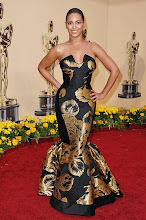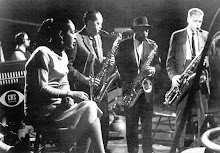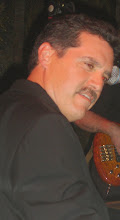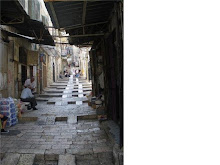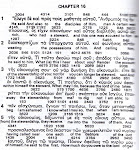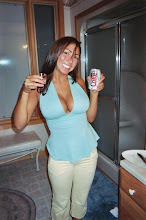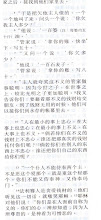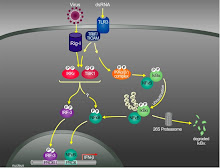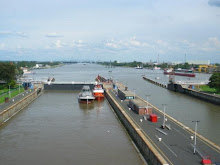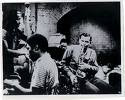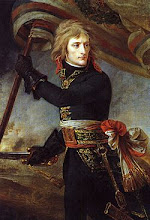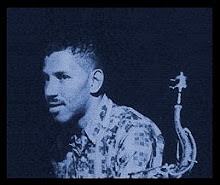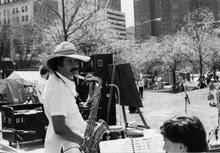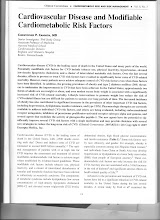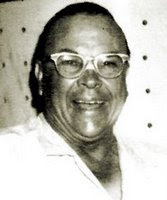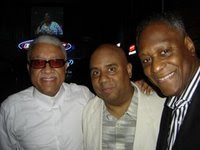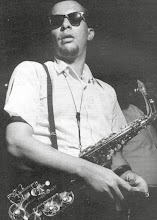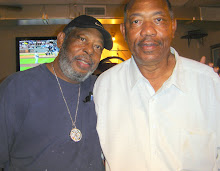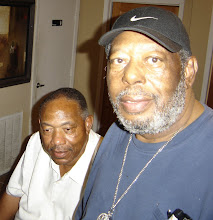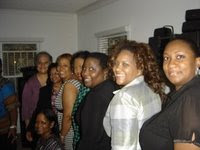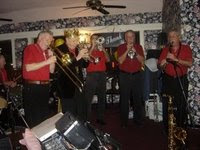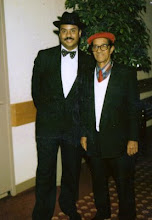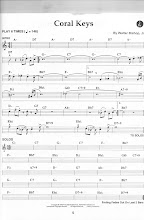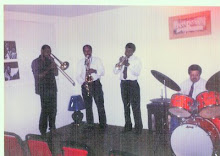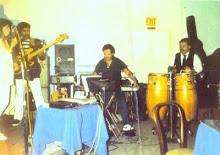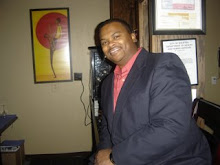Monday, June 30, 2008
Nutritionists DR. Bowden
Beets: Think of beets as red spinach, Dr. Bowden said, because they are a rich source of folate as well as natural red pigments that may be cancer fighters.How to eat: Fresh, raw and grated to make a salad. Heating decreases the antioxidant power.
Cabbage: Loaded with nutrients like sulforaphane, a chemical said to boost cancer-fighting enzymes.How to eat: Asian-style slaw or as a crunchy topping on burgers and sandwiches.
Swiss chard: A leafy green vegetable packed with carotenoids that protect aging eyes.How to eat it: Chop and saute in olive oil.
Cinnamon: Helps control blood sugar and cholesterol.How to eat it: Sprinkle on coffee or oatmeal.
Pomegranate juice: Appears to lower blood pressure and loaded with antioxidants.How to eat: Just drink it.
Dried plums: Okay, so they are really prunes, but packed with cancer-fighting antioxidants.How to eat: Wrapped in prosciutto and baked.
Pumpkin seeds: The most nutritious part of the pumpkin and packed with magnesium; high levels of the mineral are associated with lower risk for early death.How to eat: Roasted as a snack, or sprinkled on salad.
Sardines: Dr. Bowden calls them “health food in a can.'’ They are high in omega-3’s, contain virtually no mercury and are loaded with calcium. They also contain iron, magnesium, phosphorus, potassium, zinc, copper and manganese as well as a full complement of B vitamins.How to eat: Choose sardines packed in olive or sardine oil. Eat plain, mixed with salad, on toast, or mashed with dijon mustard and onions as a spread.
Turmeric: The “superstar of spices,'’ it has anti-inflammatory and anti-cancer properties.How to eat: Mix with scrambled eggs or in any vegetable dish.
Frozen blueberries: Even though freezing can degrade some of the nutrients in fruits and vegetables, frozen blueberries are available year-round and don’t spoil; associated with better memory in animal studies.How to eat: Blended with yogurt or chocolate soy milk and sprinkled with crushed almonds.
Canned pumpkin: A low-calorie vegetable that is high in fiber and immune-stimulating vitamin A; fills you up on very few calories.How to eat: Mix with a little butter, cinnamon and nutmeg.
Cabbage: Loaded with nutrients like sulforaphane, a chemical said to boost cancer-fighting enzymes.How to eat: Asian-style slaw or as a crunchy topping on burgers and sandwiches.
Swiss chard: A leafy green vegetable packed with carotenoids that protect aging eyes.How to eat it: Chop and saute in olive oil.
Cinnamon: Helps control blood sugar and cholesterol.How to eat it: Sprinkle on coffee or oatmeal.
Pomegranate juice: Appears to lower blood pressure and loaded with antioxidants.How to eat: Just drink it.
Dried plums: Okay, so they are really prunes, but packed with cancer-fighting antioxidants.How to eat: Wrapped in prosciutto and baked.
Pumpkin seeds: The most nutritious part of the pumpkin and packed with magnesium; high levels of the mineral are associated with lower risk for early death.How to eat: Roasted as a snack, or sprinkled on salad.
Sardines: Dr. Bowden calls them “health food in a can.'’ They are high in omega-3’s, contain virtually no mercury and are loaded with calcium. They also contain iron, magnesium, phosphorus, potassium, zinc, copper and manganese as well as a full complement of B vitamins.How to eat: Choose sardines packed in olive or sardine oil. Eat plain, mixed with salad, on toast, or mashed with dijon mustard and onions as a spread.
Turmeric: The “superstar of spices,'’ it has anti-inflammatory and anti-cancer properties.How to eat: Mix with scrambled eggs or in any vegetable dish.
Frozen blueberries: Even though freezing can degrade some of the nutrients in fruits and vegetables, frozen blueberries are available year-round and don’t spoil; associated with better memory in animal studies.How to eat: Blended with yogurt or chocolate soy milk and sprinkled with crushed almonds.
Canned pumpkin: A low-calorie vegetable that is high in fiber and immune-stimulating vitamin A; fills you up on very few calories.How to eat: Mix with a little butter, cinnamon and nutmeg.
Presentations-Seth Godin
Let me cut to the chase. If you want to receive accolades send me your picture since you know I am presenting and you want the aforementioned
Saying thanks in a conference presentation
I hear quite a few presentations given at conferences. Approximately 5% of the official welcome speech consists of a litany of thanks. The organizer is busy thanking the committee that handled the arrangements, the sponsors, the executive director, the tireless volunteers. I've heard people try hard to read the names superfast, or really slowly, or mumble through them...
Not only is this a total waste of time for most attendees, it doesn't even satisfy the core objective, which is thanking and rewarding the folks who helped. And it certainly doesn't encourage others to look forward to helping out.
The list is impossible to remember, said too fast and dull.
The solution is pretty simple, thanks to Powerpoint and digital cameras.
Prepare for the talk by taking pictures of each person. If they're shy, you can even do photographs in groups of two or three. Good photos, clever photos, funny photos... photos that are interesting are best.
Then, create a new presentation. Put each photo on its own slide, preferably with a well designed ID below it (it should be on a black box, with a nice sans serif font reversed out. Like you see on cable TV news.)
String one after the other. Build a dissolve transition between each one. Program it to put up a new slide every two seconds--don't go too slow!--and to loop the presentation.
Ten minutes before you're due to start, while everyone is finding their seats, run the presentation. It'll cycle 5 or 10 times before you start speaking. When you get up, start your presentation and just dive into the meaty stuff.
Every single person you feature will be famous! "Hey, I saw you in that loop!"
And you won't have wasted your valuable presentation time.
Saying thanks in a conference presentation
I hear quite a few presentations given at conferences. Approximately 5% of the official welcome speech consists of a litany of thanks. The organizer is busy thanking the committee that handled the arrangements, the sponsors, the executive director, the tireless volunteers. I've heard people try hard to read the names superfast, or really slowly, or mumble through them...
Not only is this a total waste of time for most attendees, it doesn't even satisfy the core objective, which is thanking and rewarding the folks who helped. And it certainly doesn't encourage others to look forward to helping out.
The list is impossible to remember, said too fast and dull.
The solution is pretty simple, thanks to Powerpoint and digital cameras.
Prepare for the talk by taking pictures of each person. If they're shy, you can even do photographs in groups of two or three. Good photos, clever photos, funny photos... photos that are interesting are best.
Then, create a new presentation. Put each photo on its own slide, preferably with a well designed ID below it (it should be on a black box, with a nice sans serif font reversed out. Like you see on cable TV news.)
String one after the other. Build a dissolve transition between each one. Program it to put up a new slide every two seconds--don't go too slow!--and to loop the presentation.
Ten minutes before you're due to start, while everyone is finding their seats, run the presentation. It'll cycle 5 or 10 times before you start speaking. When you get up, start your presentation and just dive into the meaty stuff.
Every single person you feature will be famous! "Hey, I saw you in that loop!"
And you won't have wasted your valuable presentation time.
Artificial Memory (AM) lookat the word art
German
English
Zur logischen Applikationsgrundlagecontent: In den angegebenen Wissensobjekten findet der interessierte Leser einmal auch die Elementarbausteine und die Formen der Wissensexpression in ArtificialMemory in bündiger Weise erklärt, dies weniger am Nutzer unter praktischem oder am Wissensmanager unter strategischem Blickpunkt denn vielmehr am Techniker logisch orientiert. Auf die technische Implemntierung bzw. auch auf die umfänglichen Konsistenzprüfungen zur Wahrung der Datenintegrität wird nicht eingegangen. Weitere Ausdrucksformen sind bereits vorbedacht und teilweise schon in Entwicklung.
To the logical application basiscontent: In the indicated knowledge objects the interested reader finds once also the elementary components and the forms of the Wissensexpression in ArtificialMemory in concise way explained, this less at the user under practical or at the knowledge manager under strategic focus rather at the technician logically oriented. With the technical Implemntierung and/or also on the extensive Konsistenzprüfungen for the keeping of the data integrity one does not deal. Further styles are already premeditation and partly already in development.
English
Zur logischen Applikationsgrundlagecontent: In den angegebenen Wissensobjekten findet der interessierte Leser einmal auch die Elementarbausteine und die Formen der Wissensexpression in ArtificialMemory in bündiger Weise erklärt, dies weniger am Nutzer unter praktischem oder am Wissensmanager unter strategischem Blickpunkt denn vielmehr am Techniker logisch orientiert. Auf die technische Implemntierung bzw. auch auf die umfänglichen Konsistenzprüfungen zur Wahrung der Datenintegrität wird nicht eingegangen. Weitere Ausdrucksformen sind bereits vorbedacht und teilweise schon in Entwicklung.
To the logical application basiscontent: In the indicated knowledge objects the interested reader finds once also the elementary components and the forms of the Wissensexpression in ArtificialMemory in concise way explained, this less at the user under practical or at the knowledge manager under strategic focus rather at the technician logically oriented. With the technical Implemntierung and/or also on the extensive Konsistenzprüfungen for the keeping of the data integrity one does not deal. Further styles are already premeditation and partly already in development.
Artificial Memory (AM)
German
English
Zur logischen Applikationsgrundlagecontent: In den angegebenen Wissensobjekten findet der interessierte Leser einmal auch die Elementarbausteine und die Formen der Wissensexpression in ArtificialMemory in bündiger Weise erklärt, dies weniger am Nutzer unter praktischem oder am Wissensmanager unter strategischem Blickpunkt denn vielmehr am Techniker logisch orientiert. Auf die technische Implemntierung bzw. auch auf die umfänglichen Konsistenzprüfungen zur Wahrung der Datenintegrität wird nicht eingegangen. Weitere Ausdrucksformen sind bereits vorbedacht und teilweise schon in Entwicklung.
To the logical application basiscontent: In the indicated knowledge objects the interested reader finds once also the elementary components and the forms of the Wissensexpression in ArtificialMemory in concise way explained, this less at the user under practical or at the knowledge manager under strategic focus rather at the technician logically oriented. With the technical Implemntierung and/or also on the extensive Konsistenzprüfungen for the keeping of the data integrity one does not deal. Further styles are already premeditation and partly already in development.
English
Zur logischen Applikationsgrundlagecontent: In den angegebenen Wissensobjekten findet der interessierte Leser einmal auch die Elementarbausteine und die Formen der Wissensexpression in ArtificialMemory in bündiger Weise erklärt, dies weniger am Nutzer unter praktischem oder am Wissensmanager unter strategischem Blickpunkt denn vielmehr am Techniker logisch orientiert. Auf die technische Implemntierung bzw. auch auf die umfänglichen Konsistenzprüfungen zur Wahrung der Datenintegrität wird nicht eingegangen. Weitere Ausdrucksformen sind bereits vorbedacht und teilweise schon in Entwicklung.
To the logical application basiscontent: In the indicated knowledge objects the interested reader finds once also the elementary components and the forms of the Wissensexpression in ArtificialMemory in concise way explained, this less at the user under practical or at the knowledge manager under strategic focus rather at the technician logically oriented. With the technical Implemntierung and/or also on the extensive Konsistenzprüfungen for the keeping of the data integrity one does not deal. Further styles are already premeditation and partly already in development.
Sunday, June 29, 2008
Thursday, June 26, 2008
A BRAND NEW Bag .POPPAS GOT IT
Well we have all but signed with blood
We will be at Legends on Wednesdays starting July 11th
A trio with the stuff
A new act!
We will be at Legends on Wednesdays starting July 11th
A trio with the stuff
A new act!
Wednesday, June 25, 2008
Saturday, June 21, 2008
Welcome to Jazz in July 2008! For two weeks, swing with the sounds of George Shearing, Billy Strayhorn, Leonard Bernstein and Brazilian jazz, and the thrilling performances of the Vanguard Jazz Orchestra, Dr. Billy Taylor, Kurt Elling, Freddy Cole, Fred Hersch and many others. The cool sounds of jazz never sounded so red-hot!· Meet the Artists of Jazz in July 2008Subscriptions
Jazz in July—Series Subscription A (4 Concerts)
Jazz in July—Series Subscription B (4 Concerts)
Jazz in July—Series Subscription C (4 Concerts)
Jazz in July—Series Subscription (All 6 Concerts)
Concerts
Somewhere: The Songs of Leonard Bernstein
Bill Charlap, pianoKurt Elling, vocalsBrian Lynch, trumpetJimmy Greene, tenor saxophoneJon Gordon, alto saxophoneTed Rosenthal, pianoPeter Washington, bass
Kenny Washington, drums
Tue, Jul 22, 2008, 8:00pm, Lexington Avenue at 92nd Street
Piano Jam
Bill Charlap, pianoDr. Billy Taylor, piano
Cedar Walton, piano
Bill Mays, piano Warren Vaché, cornetSandy Stewart, vocalsPeter Washington, bassEddie Locke, drums
Wed, Jul 23, 2008, 8:00pm, Lexington Avenue at 92nd Street
The Vanguard Jazz Orchestra: 42 Years of Swing
The Vanguard Jazz OrchestraBill Charlap, piano
Thu, Jul 24, 2008, 8:00pm, Lexington Avenue at 92nd Street
Jazz Piano Master Class
Bill Charlap, pianoTed Rosenthal, pianoSean Smith, bassParticipants to be announced.
Mon, Jul 28, 2008, 8:15pm, Lexington Avenue at 92nd Street
Jazz Samba!
Bill Charlap, pianoVera Mara, vocalsClaudio Roditi, trumpetHarry Allen, tenor saxophoneDario Eskenazi, pianoDavid Finck, bassSandro Albert, guitarAdriano Santos, drumsMauro Refosco, percussion
Tue, Jul 29, 2008, 8:00pm, Lexington Avenue at 92nd Street
The Shearing Sound: A Tribute to George Shearing
Bill Charlap, pianoFred Hersch, pianoFreddy Cole, vocalsJoe Locke, vibesPeter Bernstein, guitarSean Smith, bassKenny Washington, drumsDaniel Sadownick, percussion
Wed, Jul 30, 2008, 8:00pm, Lexington Avenue at 92nd Street
Lush Life: Billy Strayhorn
Bill Charlap, pianoCarol Sloane, vocals
Frank Wess, tenor saxophone
Terell Stafford, trumpetMulgrew Miller, pianoRussell Malone, guitarPeter Washington, bassWillie Jones III, drums
Thu, Jul 31, 2008, 8:00pm, Lexington Avenue at 92nd Street
The Jazz in July series at the Y is generously supported by The Peter Jay Sharp Foundation and is partially endowed by a generous gift from Simona and Jerome A. Chazen.
Jazz in July—Series Subscription A (4 Concerts)
Jazz in July—Series Subscription B (4 Concerts)
Jazz in July—Series Subscription C (4 Concerts)
Jazz in July—Series Subscription (All 6 Concerts)
Concerts
Somewhere: The Songs of Leonard Bernstein
Bill Charlap, pianoKurt Elling, vocalsBrian Lynch, trumpetJimmy Greene, tenor saxophoneJon Gordon, alto saxophoneTed Rosenthal, pianoPeter Washington, bass
Kenny Washington, drums
Tue, Jul 22, 2008, 8:00pm, Lexington Avenue at 92nd Street
Piano Jam
Bill Charlap, pianoDr. Billy Taylor, piano
Cedar Walton, piano
Bill Mays, piano Warren Vaché, cornetSandy Stewart, vocalsPeter Washington, bassEddie Locke, drums
Wed, Jul 23, 2008, 8:00pm, Lexington Avenue at 92nd Street
The Vanguard Jazz Orchestra: 42 Years of Swing
The Vanguard Jazz OrchestraBill Charlap, piano
Thu, Jul 24, 2008, 8:00pm, Lexington Avenue at 92nd Street
Jazz Piano Master Class
Bill Charlap, pianoTed Rosenthal, pianoSean Smith, bassParticipants to be announced.
Mon, Jul 28, 2008, 8:15pm, Lexington Avenue at 92nd Street
Jazz Samba!
Bill Charlap, pianoVera Mara, vocalsClaudio Roditi, trumpetHarry Allen, tenor saxophoneDario Eskenazi, pianoDavid Finck, bassSandro Albert, guitarAdriano Santos, drumsMauro Refosco, percussion
Tue, Jul 29, 2008, 8:00pm, Lexington Avenue at 92nd Street
The Shearing Sound: A Tribute to George Shearing
Bill Charlap, pianoFred Hersch, pianoFreddy Cole, vocalsJoe Locke, vibesPeter Bernstein, guitarSean Smith, bassKenny Washington, drumsDaniel Sadownick, percussion
Wed, Jul 30, 2008, 8:00pm, Lexington Avenue at 92nd Street
Lush Life: Billy Strayhorn
Bill Charlap, pianoCarol Sloane, vocals
Frank Wess, tenor saxophone
Terell Stafford, trumpetMulgrew Miller, pianoRussell Malone, guitarPeter Washington, bassWillie Jones III, drums
Thu, Jul 31, 2008, 8:00pm, Lexington Avenue at 92nd Street
The Jazz in July series at the Y is generously supported by The Peter Jay Sharp Foundation and is partially endowed by a generous gift from Simona and Jerome A. Chazen.
Preacher Man Roll your Mercedes window down.......
I need to write about this. I was getting off the bus in the Galleria area headed to get a smoothy at you know where. Well, I saw this short dude with glasses on about 58ish who was obviously intimidating this girl about 27 or so. Both were in a dance of sorts exiting at the door near the Cheese Cake Factory, you know. Well the dude is quick firing questions at the girl as they approached me within hearing distance.
Him: “See ! Do you know that fat dude?
Her: “No I do not know that player”
(referring to me not even nodding)
Him: “See, you know that he is a player. You don’t know him?
Her: “ No I do not know everybody, I just spoke to someone else who spoke to me?
The fact of the matter is that I did not know the girl but after my musicians voice analysis got to working I realized who the dude was. A preacher of a major church who does major preaching, and speaking in major tongues and the like who lost my respect in a major way in the Galleria for the second time.
Nuff said I have prayed about him and it
Him: “See ! Do you know that fat dude?
Her: “No I do not know that player”
(referring to me not even nodding)
Him: “See, you know that he is a player. You don’t know him?
Her: “ No I do not know everybody, I just spoke to someone else who spoke to me?
The fact of the matter is that I did not know the girl but after my musicians voice analysis got to working I realized who the dude was. A preacher of a major church who does major preaching, and speaking in major tongues and the like who lost my respect in a major way in the Galleria for the second time.
Nuff said I have prayed about him and it
LEFT and RIGHT brain functioning people only please
From Portal, ACM
Leo Beranek, an Iowa farm boy who became a Renaissance man--scientist, inventor, entrepreneur, musician, television executive, philanthropist, and author--has lived life in constant motion. His seventy-year career, through the most tumultuous and transformative years of the last century, has always been propelled by the sheer exhilaration of trying something new. In Riding the Waves, Leo Beranek tells his story. Beranek's life changed direction on a summer day in 1935 when he stopped to help a motorist with a flat tire. The driver just happened to be a former Harvard professor of engineering, who guided the young Beranek toward a full scholarship at Harvard's graduate school of engineering. Beranek went on to be one of the world's leading experts on acoustics. He became Director of Harvard's Electro-Acoustic Laboratory, where he invented the Hush-A-Phone--a telephone accessory that began the chain of regulatory challenges and lawsuits that led ultimately to the breakup of the Bell Telephone monopoly in the 1980s. Beranek moved to MIT to be a professor and Technical Director of its Acoustics Laboratory, then left academia to manage the acoustical consulting firm Bolt Beranek and Newman. Known for his work in noise control and concert acoustics, Beranek devised the worlds largest muffler to quiet jet noise and served as acoustical consultant for concert halls around the world (including the Tanglewood Music Shed, the storied summer home of the Boston Symphony Orchestra). As president of BBN, he assembled the software group that invented both the ARPANET, the forerunner of the Internet, and e-mail. In the 1970s, Beranek risked his life savings to secure the license to operate a television station; he turned Channel 5 in Boston into one of the country's best, then sold it to Metromedia in 1982 for the highest price ever paid up to that time for a broadcast station. "One central lesson I've learned is the value of risk-taking and of moving on when risks turn into busts or odds look better elsewhere," Beranek writes. Riding the Waves is a testament to the boldness, diligence, and intelligence behind Beranek's lifetime of extraordinary achievement.
Leo Beranek, an Iowa farm boy who became a Renaissance man--scientist, inventor, entrepreneur, musician, television executive, philanthropist, and author--has lived life in constant motion. His seventy-year career, through the most tumultuous and transformative years of the last century, has always been propelled by the sheer exhilaration of trying something new. In Riding the Waves, Leo Beranek tells his story. Beranek's life changed direction on a summer day in 1935 when he stopped to help a motorist with a flat tire. The driver just happened to be a former Harvard professor of engineering, who guided the young Beranek toward a full scholarship at Harvard's graduate school of engineering. Beranek went on to be one of the world's leading experts on acoustics. He became Director of Harvard's Electro-Acoustic Laboratory, where he invented the Hush-A-Phone--a telephone accessory that began the chain of regulatory challenges and lawsuits that led ultimately to the breakup of the Bell Telephone monopoly in the 1980s. Beranek moved to MIT to be a professor and Technical Director of its Acoustics Laboratory, then left academia to manage the acoustical consulting firm Bolt Beranek and Newman. Known for his work in noise control and concert acoustics, Beranek devised the worlds largest muffler to quiet jet noise and served as acoustical consultant for concert halls around the world (including the Tanglewood Music Shed, the storied summer home of the Boston Symphony Orchestra). As president of BBN, he assembled the software group that invented both the ARPANET, the forerunner of the Internet, and e-mail. In the 1970s, Beranek risked his life savings to secure the license to operate a television station; he turned Channel 5 in Boston into one of the country's best, then sold it to Metromedia in 1982 for the highest price ever paid up to that time for a broadcast station. "One central lesson I've learned is the value of risk-taking and of moving on when risks turn into busts or odds look better elsewhere," Beranek writes. Riding the Waves is a testament to the boldness, diligence, and intelligence behind Beranek's lifetime of extraordinary achievement.
PROPHETIC WORDS TO MR. LESS REVEREND? LESS. reverendless. DOES THIS REPRESENT YOUR SOCIAL CAPITAL?
JUST BECAUSE YOU PREACH DOES NOT MAKE CAPITAL UNTIL
ALL OF YOUR MEMBERS DEVELOP SOCIAL CAPITAL AND THE DESIRE TO GO YE THEREFORE AND KNOW WHAT THE THERE IS THERE FOR!
(0000000000000000000000000000000000
0000000000000000000
00000000000000000000000000
00000000
0000000
0000000000000000000000000000000000
0000000000000000000000000000000
0000
00000000000000000000000000000000
0000
00000000000000000000000000000000000000
0000000000000000000000000000000000000001)
YOUR NUMBER 1 IS IN THE WRONG PLACE, INSTEAD OF IT BEING WITH THE PEOPLE of GOD , IT IS YOU. YOU ARE ONE AND LOOK AT YOU. Look where it will be when and if you wise up! No doubt God will remove the decimal point also
for your true worth. QUIT letting the tail run the head.
ALL OF YOUR MEMBERS DEVELOP SOCIAL CAPITAL AND THE DESIRE TO GO YE THEREFORE AND KNOW WHAT THE THERE IS THERE FOR!
(0000000000000000000000000000000000
0000000000000000000
00000000000000000000000000
00000000
0000000
0000000000000000000000000000000000
0000000000000000000000000000000
0000
00000000000000000000000000000000
0000
00000000000000000000000000000000000000
0000000000000000000000000000000000000001)
YOUR NUMBER 1 IS IN THE WRONG PLACE, INSTEAD OF IT BEING WITH THE PEOPLE of GOD , IT IS YOU. YOU ARE ONE AND LOOK AT YOU. Look where it will be when and if you wise up! No doubt God will remove the decimal point also
for your true worth. QUIT letting the tail run the head.
Friday, June 20, 2008
Try it > YOU may like it
http://portal.acm.org/toc.cfm?id=SERIES968&type=series&coll=GUIDE&dl=GUIDE&CFID=74137514&CFTOKEN=95780466
Marius Paşca, Organizing and searching the world wide web of facts -- step two: harnessing the wisdom of the crowds, Proceedings of the 16th international conference on World Wide Web, May 08-12, 2007, Banff, Alberta, Canada
Marius Paşca
Google Inc., Mountain View, CA
ACM: Association for Computing Machinery
http://portal.acm.org/citation.cfm?id=1034693&dl=GUIDE&coll=GUIDE&CFID=74137514&CFTOKEN=95780466
similarities Linn reference
Marius Paşca, Organizing and searching the world wide web of facts -- step two: harnessing the wisdom of the crowds, Proceedings of the 16th international conference on World Wide Web, May 08-12, 2007, Banff, Alberta, Canada
Marius Paşca
Google Inc., Mountain View, CA
ACM: Association for Computing Machinery
http://portal.acm.org/citation.cfm?id=1034693&dl=GUIDE&coll=GUIDE&CFID=74137514&CFTOKEN=95780466
similarities Linn reference
Thursday, June 19, 2008
SRI by definition a Socially Responsible Investment (deposit ), not a Personal Irresponsible Withdrawl:
a Juneteenth Manifesto
of CONSUMER CAPITAL
A Mission Statement and call to arms
Those that are classically considered consumers, in a pathologic sense, are individuals and families who for the most part have an ancestral legacy of being disconnected or amputated from the thought of being integral to the production of capital for the community especially at the time of and since Reconstruction. To this group which I have been a part of, Capitalism has been sometimes a vague and foreign term.
At the time that we should be expected to be producing we consume and are hypnotized and prodded into an attitude of consumption as opposed to production as sin qua non evidence of our self worth. Even though our ancestral legacy is one that historically provided for production, via free labor as capital, to our country and community, the thought of being a part of producing a product or service for that community can be for the most part foreign to us because we get amputated from the thought that production is tied to community and community to production for the longevity and survival of the community.
Although the labor was necessary for the industrial revolution, we have been amputated mentally and emotionally from an attitude of a producer of a good or service into that of a consumer of the aforementioned. This produces a lack of self worth and continuance of hopelessness to consider our only self worth to be that of a consumer. This is the predominant opportunity that we are offered. There is no connection or thought of community as a resource for capital development and hence an amputation of love for the community. Some of this thought planting has been an error of omission of fact and some has been an outright deception on the part of a system that benefits from consumers as opposed to producers within the context of community. The goal of connecting personal to community goal achievement contextually is not taught and hence not thought and hence not acted upon. In fact we are taught to be in contest with individual community (including family) members to display conspicuous consumption or display conspicuous "spiritual gifts" as opposed to putting personal goals in context to community and being quiet. The personal goal to community profit context. ratio is greater than one, whereas it should be a fraction thereof. That is if earth, America, state, and local development, church and hence survival can occur, there must be an inverted ratio. The opposite is the result.
We as citizens of this ignorance in the US are tossed to and fro with a primary goal of being consumers only without regard to the community context, and then show off in the community our blessings regardless of how we procurred them. We are passively taught that consumerism is the primary goal, purpose, direction and manifestation of success. There is no care for the community or perspective of personal gain that is thought of as being in perspective to that community. A separation or amputation of personhood from community occurs. We ask not what we can do for our community in product or service but translate what our community to do for us, based on taught worldly marketing, and business principles.
This amputation has been accentuated by the War on Drugs which has perpetuated a disconnection and amputation between an attitude of a desire for community development and the love of community versus a desire for personal gain which is a result of instinctual self preservation drive accentuation and associated with a lack of self-worth. A myth of material worth over spiritual development has occurred and been perpetuated by it, with error thought internal drives of entitlement envy and resentment. The aforementioned is a result of media , poor parenting and peer-group perpetuation of the myth of personal consumption power as an end in itself as opposed to product/service development with the needs of the community being paramount.
The products consumed include drugs and alcohol which do nothing but anesthetize the truth. Instead of a prioritization of community need being met which would ultimately allow for personal fulfillment, the personal goal of consumption is sought by any means necessary at the expense of the good of community. The institutions that exist in the world today including the military industrial and the educational-correctional merely prepare people to continue with the perpetuation of the amputation of community versus personal fulfillment . The personal/community ratio is high and growing. The prophesized politico-religious fornication/adultery is also rapidly approaching an equal footing with respect to it perpetuating a contradiction between what it should be doing for community development and spiritual development and the actuality of small fiefdoms that reveal religious impotence.
There is not a diminishing opportunity for personal development and contribution to the community. Only a diminished marketing of the opportunities. Electronic media provides and increase in opportunity . This may be due to a parasitic passivity as an attitude secondary to an emotional fix, at the expense of an attitude of being made whole and given to a community. A great commission has become a “small” omission. There is not a desire to pass on the good news of opportunities for training then service. Consumer Capital desires to propagate the opportunities and news.
Consumer Capital’s mandate has been and is to concentrate on the consumer and assist in an operation to reattach the community as a personal goal of an individual to realize his/her true capital in relationship to the community. The instruction that helped included taking classes at the University of Missouri in 1970 (Life and Literature of the OLD TESTAMENT and two College of Biblical Studies in 1996 in classes under professor Kenneth Bolton in faith based community development, and last but not least teaching Sunday school since 1987. The goal has been reached by the production of educational multimedia devices and their development.
It will start at the pre-school level to begin to educate the individual to the necessity on revisiting the principles that this country was built upon prior to the introduction of slavery and the desire to compete with being as continental as Great Britain, and end in the church with the elderly.
The hemorrhage caused by the loss of the integrity of the hand vessels previously involved with predominant personal goal parasitism over community will be repaired. This will heal the misinterpretation of the "curse of the land for your sake " statement in Genesis 3 and the projection of the curse upon Black people when there was not a curse in the first place, placed upon man! (Only the ground was cursed prior to improper parenting and education to the WORD from Adam to Cain.). The desire to work is a blessing from man and given by God as an alternative to the mess-up in the Garden. There will not be a need for "you cursed me and I will curse you back attitude".
This repair will occur in the following order:
(Consumer Capital is soliciting a group of individuals to participate in a worldwide campaign to participate as volunteers of goods and services to help implement this program. Please call 713-882-7209, pete4doc@hotmail.com). See send to self below
1. Holistic personal/community goal development of body, soul and spirit. This should begin with forgiveness of an ancestor who enslaved. This would also start a process of increased self worth. The accentuation of the need for the three R’s as they articulate with community as a resource for continued personal development will be emphasized. Product service professionals will be brought in to talk to the young people beginning at the pre-school level. It will be introduced during curricular, after-school, extracurricular and summer programs.
2. Holistic personal/community idea development with a product or service as the goal. This is an introduction
3. Holistic education (see digital article below) of the consumption personal/community available resources in relationship to how they can develop. Both negative and positive examples will be given. (e.g. drugs/prostitution versus thoughts/inventions of non-oil energy sources like electric bikes)
4. Holistic personal/community product/service development
5. Communication/context as to 1- 4 above in its relationship to a redefinition of what capital truly is, with a community perspective. All this will consider a perspective of personal/community ratio which should diminish.
6. Application of 1-5
7. Three tier evaluation as to what has been accomplished with respect to 1-6
of CONSUMER CAPITAL
A Mission Statement and call to arms
Those that are classically considered consumers, in a pathologic sense, are individuals and families who for the most part have an ancestral legacy of being disconnected or amputated from the thought of being integral to the production of capital for the community especially at the time of and since Reconstruction. To this group which I have been a part of, Capitalism has been sometimes a vague and foreign term.
At the time that we should be expected to be producing we consume and are hypnotized and prodded into an attitude of consumption as opposed to production as sin qua non evidence of our self worth. Even though our ancestral legacy is one that historically provided for production, via free labor as capital, to our country and community, the thought of being a part of producing a product or service for that community can be for the most part foreign to us because we get amputated from the thought that production is tied to community and community to production for the longevity and survival of the community.
Although the labor was necessary for the industrial revolution, we have been amputated mentally and emotionally from an attitude of a producer of a good or service into that of a consumer of the aforementioned. This produces a lack of self worth and continuance of hopelessness to consider our only self worth to be that of a consumer. This is the predominant opportunity that we are offered. There is no connection or thought of community as a resource for capital development and hence an amputation of love for the community. Some of this thought planting has been an error of omission of fact and some has been an outright deception on the part of a system that benefits from consumers as opposed to producers within the context of community. The goal of connecting personal to community goal achievement contextually is not taught and hence not thought and hence not acted upon. In fact we are taught to be in contest with individual community (including family) members to display conspicuous consumption or display conspicuous "spiritual gifts" as opposed to putting personal goals in context to community and being quiet. The personal goal to community profit context. ratio is greater than one, whereas it should be a fraction thereof. That is if earth, America, state, and local development, church and hence survival can occur, there must be an inverted ratio. The opposite is the result.
We as citizens of this ignorance in the US are tossed to and fro with a primary goal of being consumers only without regard to the community context, and then show off in the community our blessings regardless of how we procurred them. We are passively taught that consumerism is the primary goal, purpose, direction and manifestation of success. There is no care for the community or perspective of personal gain that is thought of as being in perspective to that community. A separation or amputation of personhood from community occurs. We ask not what we can do for our community in product or service but translate what our community to do for us, based on taught worldly marketing, and business principles.
This amputation has been accentuated by the War on Drugs which has perpetuated a disconnection and amputation between an attitude of a desire for community development and the love of community versus a desire for personal gain which is a result of instinctual self preservation drive accentuation and associated with a lack of self-worth. A myth of material worth over spiritual development has occurred and been perpetuated by it, with error thought internal drives of entitlement envy and resentment. The aforementioned is a result of media , poor parenting and peer-group perpetuation of the myth of personal consumption power as an end in itself as opposed to product/service development with the needs of the community being paramount.
The products consumed include drugs and alcohol which do nothing but anesthetize the truth. Instead of a prioritization of community need being met which would ultimately allow for personal fulfillment, the personal goal of consumption is sought by any means necessary at the expense of the good of community. The institutions that exist in the world today including the military industrial and the educational-correctional merely prepare people to continue with the perpetuation of the amputation of community versus personal fulfillment . The personal/community ratio is high and growing. The prophesized politico-religious fornication/adultery is also rapidly approaching an equal footing with respect to it perpetuating a contradiction between what it should be doing for community development and spiritual development and the actuality of small fiefdoms that reveal religious impotence.
There is not a diminishing opportunity for personal development and contribution to the community. Only a diminished marketing of the opportunities. Electronic media provides and increase in opportunity . This may be due to a parasitic passivity as an attitude secondary to an emotional fix, at the expense of an attitude of being made whole and given to a community. A great commission has become a “small” omission. There is not a desire to pass on the good news of opportunities for training then service. Consumer Capital desires to propagate the opportunities and news.
Consumer Capital’s mandate has been and is to concentrate on the consumer and assist in an operation to reattach the community as a personal goal of an individual to realize his/her true capital in relationship to the community. The instruction that helped included taking classes at the University of Missouri in 1970 (Life and Literature of the OLD TESTAMENT and two College of Biblical Studies in 1996 in classes under professor Kenneth Bolton in faith based community development, and last but not least teaching Sunday school since 1987. The goal has been reached by the production of educational multimedia devices and their development.
It will start at the pre-school level to begin to educate the individual to the necessity on revisiting the principles that this country was built upon prior to the introduction of slavery and the desire to compete with being as continental as Great Britain, and end in the church with the elderly.
The hemorrhage caused by the loss of the integrity of the hand vessels previously involved with predominant personal goal parasitism over community will be repaired. This will heal the misinterpretation of the "curse of the land for your sake " statement in Genesis 3 and the projection of the curse upon Black people when there was not a curse in the first place, placed upon man! (Only the ground was cursed prior to improper parenting and education to the WORD from Adam to Cain.). The desire to work is a blessing from man and given by God as an alternative to the mess-up in the Garden. There will not be a need for "you cursed me and I will curse you back attitude".
This repair will occur in the following order:
(Consumer Capital is soliciting a group of individuals to participate in a worldwide campaign to participate as volunteers of goods and services to help implement this program. Please call 713-882-7209, pete4doc@hotmail.com). See send to self below
1. Holistic personal/community goal development of body, soul and spirit. This should begin with forgiveness of an ancestor who enslaved. This would also start a process of increased self worth. The accentuation of the need for the three R’s as they articulate with community as a resource for continued personal development will be emphasized. Product service professionals will be brought in to talk to the young people beginning at the pre-school level. It will be introduced during curricular, after-school, extracurricular and summer programs.
2. Holistic personal/community idea development with a product or service as the goal. This is an introduction
3. Holistic education (see digital article below) of the consumption personal/community available resources in relationship to how they can develop. Both negative and positive examples will be given. (e.g. drugs/prostitution versus thoughts/inventions of non-oil energy sources like electric bikes)
4. Holistic personal/community product/service development
5. Communication/context as to 1- 4 above in its relationship to a redefinition of what capital truly is, with a community perspective. All this will consider a perspective of personal/community ratio which should diminish.
6. Application of 1-5
7. Three tier evaluation as to what has been accomplished with respect to 1-6
Wednesday, June 18, 2008
SRI
Socially Responsible Investment
I doubt if the Junteenth party will celebrate this.
SEE IASB BELOW.
I doubt if the Junteenth party will celebrate this.
SEE IASB BELOW.
Labels:
fundraising,
Gift Works.,
Invstment managers,
money,
SRI
IASB summit? Freedom is the ability to work and have money left over or invest OPM.Who is invited to this Junteenth Party? ....from Tejas?
original by James Langton
REPRINTED WITHOUT PERMISSION
This is the place to chase the money and where reparations should be paid from
The world’s securities authorities announced plans for the creation of a group to monitor the International Accounting Standards Committee Foundation, which, in turn, oversees the International Accounting Standards Board.The International Organization of Securities Commissions, the European Commission, Japan's Financial Services Agency and the US Securities and Exchange Commission issued a joint statement welcoming a meeting organized by the IASCF regarding the creation of an IASCF Monitoring Group.The IASCF is the private foundation that provides public interest oversight to the IASB, which promulgates International Financial Reporting Standards. The IASCF Monitoring Group will provide for organized interaction between national authorities responsible for the adoption or recognition of accounting standards for listed companies and the IASCF.The monitoring group would also participate in the selection and approval of IASCF trustees, and the trustees would regularly report to the group on their oversight of the IASB. The monitoring group’s role will be designed to ensure the independence of the IASB, while reinforcing the public interest oversight provided by the trustees.On June 19 representatives of IOSCO, the SEC, Japan's FSA, and the EC will participate in a roundtable regarding the review of the IASCF constitution.“We are pleased at the progress being made in advancing interaction between securities authorities and the IASCF. The increased adoption and use of IFRS in capital markets around the world necessitates strengthening the accountability of the Foundation to the authorities responsible for setting financial disclosure requirements by public companies," said the statement attributed to SEC chairman Christopher Cox, IOSCO executive committee chairperson Jane Diplock, FSA commissioner Takafumi Sato, and European Internal Market and Services commissioner Charlie McCreevy.“In organizing the upcoming roundtable, the Foundation acknowledges the need to create a mechanism for interaction between securities authorities and the IASCF that approximates the historical relationship between securities authorities and national standard setters. This, in turn, will enable securities authorities that allow or mandate the use of IFRS to discharge their mandates relating to investor protection, market integrity and capital formation effectively,” they added
REPRINTED WITHOUT PERMISSION
This is the place to chase the money and where reparations should be paid from
The world’s securities authorities announced plans for the creation of a group to monitor the International Accounting Standards Committee Foundation, which, in turn, oversees the International Accounting Standards Board.The International Organization of Securities Commissions, the European Commission, Japan's Financial Services Agency and the US Securities and Exchange Commission issued a joint statement welcoming a meeting organized by the IASCF regarding the creation of an IASCF Monitoring Group.The IASCF is the private foundation that provides public interest oversight to the IASB, which promulgates International Financial Reporting Standards. The IASCF Monitoring Group will provide for organized interaction between national authorities responsible for the adoption or recognition of accounting standards for listed companies and the IASCF.The monitoring group would also participate in the selection and approval of IASCF trustees, and the trustees would regularly report to the group on their oversight of the IASB. The monitoring group’s role will be designed to ensure the independence of the IASB, while reinforcing the public interest oversight provided by the trustees.On June 19 representatives of IOSCO, the SEC, Japan's FSA, and the EC will participate in a roundtable regarding the review of the IASCF constitution.“We are pleased at the progress being made in advancing interaction between securities authorities and the IASCF. The increased adoption and use of IFRS in capital markets around the world necessitates strengthening the accountability of the Foundation to the authorities responsible for setting financial disclosure requirements by public companies," said the statement attributed to SEC chairman Christopher Cox, IOSCO executive committee chairperson Jane Diplock, FSA commissioner Takafumi Sato, and European Internal Market and Services commissioner Charlie McCreevy.“In organizing the upcoming roundtable, the Foundation acknowledges the need to create a mechanism for interaction between securities authorities and the IASCF that approximates the historical relationship between securities authorities and national standard setters. This, in turn, will enable securities authorities that allow or mandate the use of IFRS to discharge their mandates relating to investor protection, market integrity and capital formation effectively,” they added
NBA Championships In the Past, Celtics win this one
2006-07
San Antonio Spurs
Cleveland Cavaliers
4-0
Tony Parker, San Antonio
2005-06
Miami Heat
Dallas Mavericks
4-2
Dwyane Wade, Miami Heat
2004-05
San Antonio Spurs
Detroit Pistons
4-3
Tim Duncan, San Antonio
2003-04
Detroit Pistons
Los Angeles Lakers
4-1
Chauncey Billups, Detroit Pistons
2002-03
San Antonio Spurs
New Jersey Nets
4-2
Tim Duncan, San Antonio
2001-02
Los Angeles Lakers
New Jersey Nets
4-0
Shaquille O'Neal, Los Angeles
2000-01
Los Angeles Lakers
Philadelphia 76ers
4-1
Shaquille O'Neal, Los Angeles
1999-00
Los Angeles Lakers
Indiana Pacers
4-2
Shaquille O'Neal, Los Angeles
1998-99
San Antonio Spurs
New York Knicks
4-1
Tim Duncan, San Antonio
1997-98
Chicago Bulls
Utah Jazz
4-2
Michael Jordan, Chicago
1996-97
Chicago Bulls
Utah Jazz
4-2
Michael Jordan, Chicago
1995-96
Chicago Bulls
Seattle SuperSonics
4-2
Michael Jordan, Chicago
1994-95
Houston Rockets
Orlando Magic
4-0
Hakeem Olajuwon, Houston
1993-94
Houston Rockets
New York Knicks
4-3
Hakeem Olajuwon, Houston
1992-93
Chicago Bulls
Phoenix Suns
4-2
Michael Jordan, Chicago
1991-92
Chicago Bulls
Portland Trail Blazers
4-2
Michael Jordan, Chicago
1990-91
Chicago Bulls
Los Angeles Lakers
4-1
Michael Jordan, Chicago
1989-90
Detroit Pistons
Portland Trail Blazers
4-1
Isiah Thomas, Detroit
1988-89
Detroit Pistons
Los Angeles Lakers
4-0
Joe Dumars, Detroit
1987-88
Los Angeles Lakers
Detroit Pistons
4-3
James Worthy, Los Angeles
1986-87
Los Angeles Lakers
Boston Celtics
4-2
Magic Johnson, Los Angeles
1985-86
Boston Celtics
Houston Rockets
4-2
Larry Bird, Boston
1984-85
Los Angeles Lakers
Boston Celtics
4-2
Kareem Abdul-Jabbar, Los Angeles
1983-84
Boston Celtics
Los Angeles Lakers
4-3
Larry Bird, Boston
1982-83
Philadelphia 76ers
Los Angeles Lakers
4-0
Moses Malone, Philadelphia
1981-82
Los Angeles Lakers
Philadelphia 76ers
4-2
Magic Johnson, Los Angeles
1980-81
Boston Celtics
Houston Rockets
4-2
Cedric Maxwell, Boston
1979-80
Los Angeles Lakers
Philadelphia 76ers
4-2
Magic Johnson, Los Angeles
1978-79
Seattle SuperSonics
Washington Bullets
4-1
Dennis Johnson, Seattle
1977-78
Washington Bullets
Seattle SuperSonics
4-3
Wes Unseld, Washington
1976-77
Portland Trail Blazers
Philadelphia 76ers
4-2
Bill Walton, Portland
1975-76
Boston Celtics
Phoenix Suns
4-2
Jo Jo White, Boston
1974-75
Golden State Warriors
Washington Bullets
4-0
Rick Barry, Golden State
1973-74
Boston Celtics
Milwaukee Bucks
4-3
John Havlicek, Boston
1972-73
New York Knicks
Los Angeles Lakers
4-1
Willis Reed, New York
1971-72
Los Angeles Lakers
New York Knicks
4-1
Wilt Chamberlain, Los Angeles
1970-71
Milwaukee Bucks
Baltimore Bullets
4-0
Kareem Abdul-Jabbar, Milwaukee
1969-70
New York Knicks
Los Angeles Lakers
4-3
Willis Reed, New York
1968-69
Boston Celtics
Los Angeles Lakers
4-3
Jerry West, Los Angeles
1967-68
Boston Celtics
Los Angeles Lakers
4-2
1966-67
Philadelphia 76ers
San Francisco Warriors
4-2
1965-66
Boston Celtics
Los Angeles Lakers
4-3
1964-65
Boston Celtics
Los Angeles Lakers
4-1
1963-64
Boston Celtics
San Francisco Warriors
4-1
1962-63
Boston Celtics
Los Angeles Lakers
4-2
1961-62
Boston Celtics
Los Angeles Lakers
4-3
1960-61
Boston Celtics
St. Louis Hawks
4-1
1959-60
Boston Celtics
St. Louis Hawks
4-3
1958-59
Boston Celtics
Minneapolis Lakers
4-0
1957-58
St. Louis Hawks
Boston Celtics
4-2
1956-57
Boston Celtics
St. Louis Hawks
4-3
1955-56
Philadelphia Warriors
Fort Wayne Pistons
4-1
1954-55
Syracuse Nationals
Fort Wayne Pistons
4-3
1953-54
Minneapolis Lakers
Syracuse Nationals
4-3
1952-53
Minneapolis Lakers
New York Knicks
4-1
1951-52
Minneapolis Lakers
New York Knicks
4-3
1950-51
Rochester Royals
New York Knicks
4-3
1949-50
Minneapolis Lakers
Syracuse Nationals
4-2
1948-49
Minneapolis Lakers
Washington Capitols
4-2
1947-48
Baltimore Bullets
Philadelphia Warriors
4-2
1946-47
Philadelphia Warriors
Chicago Stags
4-1
San Antonio Spurs
Cleveland Cavaliers
4-0
Tony Parker, San Antonio
2005-06
Miami Heat
Dallas Mavericks
4-2
Dwyane Wade, Miami Heat
2004-05
San Antonio Spurs
Detroit Pistons
4-3
Tim Duncan, San Antonio
2003-04
Detroit Pistons
Los Angeles Lakers
4-1
Chauncey Billups, Detroit Pistons
2002-03
San Antonio Spurs
New Jersey Nets
4-2
Tim Duncan, San Antonio
2001-02
Los Angeles Lakers
New Jersey Nets
4-0
Shaquille O'Neal, Los Angeles
2000-01
Los Angeles Lakers
Philadelphia 76ers
4-1
Shaquille O'Neal, Los Angeles
1999-00
Los Angeles Lakers
Indiana Pacers
4-2
Shaquille O'Neal, Los Angeles
1998-99
San Antonio Spurs
New York Knicks
4-1
Tim Duncan, San Antonio
1997-98
Chicago Bulls
Utah Jazz
4-2
Michael Jordan, Chicago
1996-97
Chicago Bulls
Utah Jazz
4-2
Michael Jordan, Chicago
1995-96
Chicago Bulls
Seattle SuperSonics
4-2
Michael Jordan, Chicago
1994-95
Houston Rockets
Orlando Magic
4-0
Hakeem Olajuwon, Houston
1993-94
Houston Rockets
New York Knicks
4-3
Hakeem Olajuwon, Houston
1992-93
Chicago Bulls
Phoenix Suns
4-2
Michael Jordan, Chicago
1991-92
Chicago Bulls
Portland Trail Blazers
4-2
Michael Jordan, Chicago
1990-91
Chicago Bulls
Los Angeles Lakers
4-1
Michael Jordan, Chicago
1989-90
Detroit Pistons
Portland Trail Blazers
4-1
Isiah Thomas, Detroit
1988-89
Detroit Pistons
Los Angeles Lakers
4-0
Joe Dumars, Detroit
1987-88
Los Angeles Lakers
Detroit Pistons
4-3
James Worthy, Los Angeles
1986-87
Los Angeles Lakers
Boston Celtics
4-2
Magic Johnson, Los Angeles
1985-86
Boston Celtics
Houston Rockets
4-2
Larry Bird, Boston
1984-85
Los Angeles Lakers
Boston Celtics
4-2
Kareem Abdul-Jabbar, Los Angeles
1983-84
Boston Celtics
Los Angeles Lakers
4-3
Larry Bird, Boston
1982-83
Philadelphia 76ers
Los Angeles Lakers
4-0
Moses Malone, Philadelphia
1981-82
Los Angeles Lakers
Philadelphia 76ers
4-2
Magic Johnson, Los Angeles
1980-81
Boston Celtics
Houston Rockets
4-2
Cedric Maxwell, Boston
1979-80
Los Angeles Lakers
Philadelphia 76ers
4-2
Magic Johnson, Los Angeles
1978-79
Seattle SuperSonics
Washington Bullets
4-1
Dennis Johnson, Seattle
1977-78
Washington Bullets
Seattle SuperSonics
4-3
Wes Unseld, Washington
1976-77
Portland Trail Blazers
Philadelphia 76ers
4-2
Bill Walton, Portland
1975-76
Boston Celtics
Phoenix Suns
4-2
Jo Jo White, Boston
1974-75
Golden State Warriors
Washington Bullets
4-0
Rick Barry, Golden State
1973-74
Boston Celtics
Milwaukee Bucks
4-3
John Havlicek, Boston
1972-73
New York Knicks
Los Angeles Lakers
4-1
Willis Reed, New York
1971-72
Los Angeles Lakers
New York Knicks
4-1
Wilt Chamberlain, Los Angeles
1970-71
Milwaukee Bucks
Baltimore Bullets
4-0
Kareem Abdul-Jabbar, Milwaukee
1969-70
New York Knicks
Los Angeles Lakers
4-3
Willis Reed, New York
1968-69
Boston Celtics
Los Angeles Lakers
4-3
Jerry West, Los Angeles
1967-68
Boston Celtics
Los Angeles Lakers
4-2
1966-67
Philadelphia 76ers
San Francisco Warriors
4-2
1965-66
Boston Celtics
Los Angeles Lakers
4-3
1964-65
Boston Celtics
Los Angeles Lakers
4-1
1963-64
Boston Celtics
San Francisco Warriors
4-1
1962-63
Boston Celtics
Los Angeles Lakers
4-2
1961-62
Boston Celtics
Los Angeles Lakers
4-3
1960-61
Boston Celtics
St. Louis Hawks
4-1
1959-60
Boston Celtics
St. Louis Hawks
4-3
1958-59
Boston Celtics
Minneapolis Lakers
4-0
1957-58
St. Louis Hawks
Boston Celtics
4-2
1956-57
Boston Celtics
St. Louis Hawks
4-3
1955-56
Philadelphia Warriors
Fort Wayne Pistons
4-1
1954-55
Syracuse Nationals
Fort Wayne Pistons
4-3
1953-54
Minneapolis Lakers
Syracuse Nationals
4-3
1952-53
Minneapolis Lakers
New York Knicks
4-1
1951-52
Minneapolis Lakers
New York Knicks
4-3
1950-51
Rochester Royals
New York Knicks
4-3
1949-50
Minneapolis Lakers
Syracuse Nationals
4-2
1948-49
Minneapolis Lakers
Washington Capitols
4-2
1947-48
Baltimore Bullets
Philadelphia Warriors
4-2
1946-47
Philadelphia Warriors
Chicago Stags
4-1
Tuesday, June 17, 2008
DNA and crime
It appears that DNA has a selective prioritization in the solving of certain crimes. Murders are the number one priority (cost average cost/case =$1394.00). DNA is utilized in burglary investigations also, with a witness to DNA ratio of 1/3 for convictions.
This poses two questions. What if someone's DNA was planted? and 2. what if the accused was unable to afford another confirmatory test or was unable to prove that they were not there at the crime scene?
Whichever is the case DNA testing appears to be a field to train in for jobs. It aint goin' no where!
Both based on USA today articles
This poses two questions. What if someone's DNA was planted? and 2. what if the accused was unable to afford another confirmatory test or was unable to prove that they were not there at the crime scene?
Whichever is the case DNA testing appears to be a field to train in for jobs. It aint goin' no where!
Both based on USA today articles
Apolitical and Colorless
Today
We know that someone who has a 5 milliion dollar winery would not declare alcohol as a terroristic threat. Neither would she associate beer consumption with criminal activity or murderous activity. Yet, a big beer company is for sale. The agenda of profit greed at tax-payers expense is apolitical and colorless. Some are getting out of the game. Instead of selling guns and liquor to the Indians to defeat them, our complete infrastucture in our youth is led to slaughter by the sexualization and marketing of drinking at home, in ads and everywhere else. It is an issue of a terroristic threat from within.
I know where a presidential candidate would have to stand on alcohol consumption. This is why both candidates were seen guzzling and shotting. Between tax revenues and loss of stock gains the presence of a snowballs chance in hell is more likely than a congressional, senate, judicial and executive cooperative to declare liquor as unpatriotic and requiring a medical professional's OK.
Nuff said?
We know that someone who has a 5 milliion dollar winery would not declare alcohol as a terroristic threat. Neither would she associate beer consumption with criminal activity or murderous activity. Yet, a big beer company is for sale. The agenda of profit greed at tax-payers expense is apolitical and colorless. Some are getting out of the game. Instead of selling guns and liquor to the Indians to defeat them, our complete infrastucture in our youth is led to slaughter by the sexualization and marketing of drinking at home, in ads and everywhere else. It is an issue of a terroristic threat from within.
I know where a presidential candidate would have to stand on alcohol consumption. This is why both candidates were seen guzzling and shotting. Between tax revenues and loss of stock gains the presence of a snowballs chance in hell is more likely than a congressional, senate, judicial and executive cooperative to declare liquor as unpatriotic and requiring a medical professional's OK.
Nuff said?
HElp
I can not seem to get the side posts working . Please contact me to get these people Google or not
. Paşca, D. Lin, J. Bigham, A. Lifchits, and A. Jain. Organizing and searching the World Wide Web of facts -- step one: the one-million fact extraction challenge. In Proceedings of the 21st National Conference on Artificial Intelligence (AAAI-06), pages 1400--1405, Boston, Massachusetts, 2006.
M. Paşca and B. Van Durme. What you seek is what you get: Extraction of class attributes from query logs. In Proceedings of the 20th International Joint Conference on Artificial Intelligence (IJCAI-07), pages 2832--2837, Hyderabad, India, 2007.
CONTACT ME IF YOU KNOW HOW TO REACH THESE PEOPLE
. Paşca, D. Lin, J. Bigham, A. Lifchits, and A. Jain. Organizing and searching the World Wide Web of facts -- step one: the one-million fact extraction challenge. In Proceedings of the 21st National Conference on Artificial Intelligence (AAAI-06), pages 1400--1405, Boston, Massachusetts, 2006.
M. Paşca and B. Van Durme. What you seek is what you get: Extraction of class attributes from query logs. In Proceedings of the 20th International Joint Conference on Artificial Intelligence (IJCAI-07), pages 2832--2837, Hyderabad, India, 2007.
CONTACT ME IF YOU KNOW HOW TO REACH THESE PEOPLE
Send 2 self and SEE
Curriculum Overlay Model for Embedding Digital
Resources
Huda Khan, Keith Maull, Tamara Sumner
Institute of Cognitive Science
Department of Computer Science
University of Colorado at Boulder, Boulder, CO 80309
huda.khan, keith.maull, tamara.sumner@colorado.edu
ABSTRACT
This paper describes the design and implementation of a curriculum
overlay model for the representation of adaptable curriculum using
educational digital library resources. We focus on representing
curriculum to enable the incorporation of digital resources into
curriculum and curriculum sharing and customization by educators.
We defined this model as a result of longitudinal studies on
educators’ development and customization of curriculum and user
interface design studies of prototypes representing curriculum. Like
overlay journals or the information network overlay model, our
curriculum overlay model defines curriculum as a compound object
with internal semantic relationships and relationships to digital
library metadata describing resources. We validated this model by
instantiating the model using science curriculum which uses digital
library resources and using this instantiation within an application
that, built on FEDORA, supports curriculum customization.
Findings from this work can support the design of digital library
services for customizing curriculum which embeds digital resources.
Categories and Subject Descriptors
H.1.2 [Models and Principles]: User/Machine Systems; H3.7
[Information Storage and Retrieval]: Digital Libraries – User
issues; K.3.1. [Computers and Education]: Computer Users in
Education – Computer-assisted instruction.
General Terms: Design, Human Factors.
Keywords
Personalization, digital libraries, curriculum, FEDORA, content
models, lessons, Teaching Boxes.
1. INTRODUCTION
Educational digital libraries and the World Wide Web have made
interactive educational resources available to educators at an
unprecedented scale. The Effective Access project [10], which
surveyed high school educators’ attitudes towards and use of webbased
educational resources, reports significant enthusiasm for using
web-based resources in science and mathematics instruction.
Respondents to this national survey repeatedly stressed the potential
of interactive resources for creating engaging learning experiences,
for incorporating real-world scientific data into classroom
instruction, and for generally increasing the relevance of science to
“play station nation” [ibid]. However, despite the reported
enthusiasm, interactive educational resources are largely not being
integrated into mainstream teaching practices. Barriers to use
include a lack of technical infrastructure in schools, lack of
professional development to help educators teach with technology,
and lack of alignment with core curricula that have been adopted by
their school or school district [ibid]. This issue of curricular
alignment, which is the focus of our work, transcends national
borders, as many countries have mandated national curricula, while
others have recommended educational standards.
These findings align with other research on middle and high school
educators’ interactions with curriculum [4, 9, 20]. Educators do not
teach individual resources isolated from curriculum, rather they (a)
integrate resources into curriculum aligned with specific standards
and intended learning goals and (b) use resources to customize core
curriculum to fit their specific classroom teaching contexts. The
context affecting classroom teaching includes grade level, classroom
pace, student background in the topic, student misconceptions, and
student interest. Whereas previous efforts such as the Instructional
Architect [19] focus on individual educators’ construction of webbased
content employing digital resources, we focus on modeling
curriculum which employs educational digital resources. Our work
is motivated by the need for a representation of curriculum which
allows the systematic and scalable embedding of web-based
educational resources, which may be created by many different
institutions, into middle and high school science curriculum.
In this article, we discuss the design and instantiation of a
curriculum overlay model that incorporates individual educational
resources into a coherent curriculum context, and supports digital
library services for the customization, sharing, and maintenance of
curricula incorporating interactive resources. This model defines
curricular components (such as learning goals, lessons, activities,
and resources), related components (such as notes describing the
potential use of resource to teach a particular science concept), the
relationships between components, and associated behaviors. This
curriculum overlay model offers a general framework for digital
library services supporting incorporation of educational resources
into curriculum. This framework has been informed by multiple
studies with science educators. These studies, which span three
years of research, include longitudinal observations of master
educators engaged in curriculum design and adaptation, analyses of
existing exemplary science curriculum, and interviews and usability
studies on evolving prototypes.
In the remainder of this article, we first review related work in
learning objects, digital libraries, and curriculum design. We then
describe the studies that informed the design of the curriculum
overlay model. An abstract representation of the resulting
curriculum overlay model is then presented, followed by a detailed
Permission to make digital or hard copies of all or part of this work for
personal or classroom use is granted without fee provided that copies are
not made or distributed for profit or commercial advantage and that copies
bear this notice and the full citation on the first page. To copy otherwise, or
republish, to post on servers or to redistribute to lists, requires prior specific
permission and/or a fee.
JCDL ’08, June 16–20, 2008, Pittsburgh, Pennsylvania, USA.
Copyright 2008 ACM 978-1-59593-998-2/08/06…$5.00.
74
discussion of its implementation in the Federated Digital Object
Repository Architecture (FEDORA) [8]. Finally, we describe how
we validated this model by using it to instantiate existing science
curriculum and discuss future work to further demonstrate the
model’s robustness and generalizability.
2. RELATED WORK
One prominent area in the design of computational representations
of educational content is the learning objects paradigm. Wiley
defines a learning object as “any digital resource that can be reused
to support learning” [22] and describes learning objects as analogs
to computational objects in the object-oriented paradigm. A learning
object can thus include educational content in the form of lessons,
modules, tutorials, or activities. A “learning content management
system” is a course management system which supports the
administration and use of learning objects in online courses.
Designing learning objects entails using one of multiple
specification and packaging standards in order to deploy those
learning objects in different learning content management systems
(LCMSs). Examples of learning object specifications and standards
include the Sharable Content Object Reference Model (SCORM),
developed by the Advanced Distributed Learning Initiative (ADL)
to support self-study modules, and the Learning Object
Management (LOM) standard, which includes 76 different metadata
markup fields for the specification of information about learning
objects [2, 7].
Learning object research has explored the packaging and
specification of learning objects with an emphasis on how these
objects can be included in learning content management systems to
support self-directed learning. Here, in contrast, we focus supporting
K-12 educators’ review and customization of curriculum
incorporating educational resources for use in formal classroom
teaching. We focus not on the packaging of individual resources but
on the representation of a coherent yet extensible curriculum ‘layer’
which embeds educational resources.
Table 1 provides an overview of the terms we use in this paper and
their associated meaning. In the context of this work, the term
‘resource’ refers to a more general term than learning object,
encapsulating websites and data-sets with associated metadata
descriptions without requiring a particular specification format.
Table 1. Overview of terms.
Resource A web-site (e.g. lesson plans, activities, etc.) or
web-based data (e.g. images, data sets, etc.) which
has associated metadata describing its
characteristics (e.g. author, title, URL, etc.) A
resource refers to an entity which is more general
than a ‘learning object’.
Curriculum The definitions of this term vary from lessons
actually taught in class to a year-long or multigrade
level description of learning goals and
subject matter to be taught to students [1]. Here,
we use the term to refer to educators’ plans for
classroom teaching, including lessons and
activities.
Flexibly
Adaptive
Curriculum
Curriculum that is designed to provide multiple
modules of instruction or multiple exemplars,
promoting adaptation of the curriculum in different
local contexts [9, 20].
Our research focuses on the representation of ‘sustainable’
curriculum [9] overlaid on educational resources. One approach
towards the design of sustainable curriculum is the incorporation of
the capacity for extension and adaptation in the curriculum,
allowing the curriculum to be used and customized long after its
initial design and in different classroom contexts [4, 9, 20].
Educators’ teaching of curriculum is affected by multiple classroom
contextual factors such as student learning styles, student
comprehension of pre-requisite concepts, and student interest.
Furthermore, factors such as location may affect what kinds of
examples or activities connect with students’ experiences with their
surroundings and environment. Localized examples, instead of
being a hindrance to use of educational resources, provide the
contextual information which supports educators’ understanding of
how to use resources to achieve particular learning objectives with
their students [4, 9, 20]. Thus, our research work explores the design
of ‘flexibly adaptive’ curriculum to support use of educational
resources by teachers in their individual classroom settings.
The conception of curriculum as a layer of contextualization
overlaid on educational resources relates to research on overlay
journals [21], information network overlay [14, 15], and Open
Archives Initiative – Object Reuse and Exchange (OAI-ORE) [16].
Research on overlay journals explores the repurposing of scholarly
journal articles originally published in different journals and
residing in heterogeneous repositories. Services which allow editors
to integrate these different articles into a new context of citation,
while maintaining references to the ‘lineage’ of these articles or the
original publication and repository location, support dissemination
and scholarly communication. Similarly, our research explores the
repurposing of individual resources in new curricular contexts while
maintaining the links to the digital library origins of these resources
(including access to metadata). The information network overlay
model explores a similar overlay of relationships to external
ontologies, such as those for educational standards, onto a network
of digital objects describing National Science Digital Library
(NSDL) [18] resources and their associated metadata.
Research on OAI-ORE seeks to define an interoperability layer
which enables the machine-readable sharing and transfer of the
internal structure and relationships within ‘compound objects’.
Compound objects refer to objects that have constituent
components, such as an object representing an overlay journal
(which consists of objects representing articles). As this research
shows, curriculum can be modeled in the form of a complex
compound object consisting of multiple lessons and other
components. The curriculum overlay model thus provides an
interesting use case for OAI-ORE. In turn, OAI-ORE could be
useful for sharing curriculum across digital libraries.
3. TEACHING BOX AND DESIGN STUDIES
The motivation driving our exploration of curriculum overlay model
design is the representation of flexibly adaptive and sustainable
science curriculum which aligns with learning objectives and
educational standards and which incorporates educational resources.
Specifically, we explore the design of a curriculum overlay model
which can achieve these goals:
(a) Supporting middle and high school science educators in
accessing and contributing to contextual information (such as
related educational standards, learning objectives, lessons and
activities incorporating educational resources, and notes by
75
educators describing the pedagogical relevance of a resource)
that facilitates classroom teaching using educational resources.
(b) Supporting curriculum customization services which enable
educators’ (i) integration of educational resources into existing
curriculum and (ii) adaptation of curriculum using educational
resources to fit their classroom teaching constraints.
To meet these goals and to ensure that the design of the curriculum
overlay model was based on best practices of designing adaptive
science curriculum, we embarked on human-centered design studies
exploring the development and structure of science curriculum with
embedded digital resources. These studies included two longitudinal
studies of educators’ curriculum development in the 2004 and 2005
DLESE Teaching Box workshops [6] and our interface design
studies [11, 12, 13].
The DLESE Teaching Boxes workshops [6], employing educators
as primary participant designers of curriculum, sought to align
learning objectives, educational standards, and lessons with
educational resources. Because of the alignment of these curricular
design goals with the motivation for our work, we selected the study
of these workshops as part of the empirical basis for our curriculum
overlay model. We refined the pilot curriculum overlay model based
on the results of the Teaching Boxes workshops in our interface
design studies.
3.1 2004 Pilot Teaching Box Workshops
‘Teaching Boxes’ are so named as an analogy to the binders or
boxes of lessons and teaching materials which educators accumulate
throughout their teaching careers. Educators reuse and customize
these materials in their teaching. The DLESE Teaching Box
workshop series thus was exploring the design of collections of
lessons and activities which can support educators’ use and reuse of
educational digital resources. This series consisted of two 2-day
long sessions and one 5-day long session where educators,
scientists, and digital library staff collaborated to create Teaching
Boxes.
7 middle and high school educators participated in the 2004
Teaching Box workshop series. These educators were tasked with
identifying the curricular information which should be included in
the Teaching Boxes to enable their use and customization by other
educators. Educators also had to teach the Teaching Boxes they
developed in their own classrooms. Through a process of
brainstorming and providing feedback on mockups of Teaching Box
content, these educators identified three main categories of
curricular content: (a) a concept map or list showing the intended
conceptual progression for the students and the educational
standards supported by teaching these concepts, (b) a set of
suggested lessons targeting one or more of these concepts, and (c) a
set of the educational resources included in the lessons. Figure 1
shows excerpts of screenshots of this content in the Plate Tectonics
Teaching Box.
This workshop series also resulted in the definition of templates
which described the structure of Teaching Box content. The content
of the two Teaching Boxes resulting from this workshop series was
organized using these templates. For example, the lesson template
defined a lesson as consisting of fields describing title, related
concepts, and one or more activities. These templates and our
observations of educators’ organization of Teaching Box content
informed the pilot version of the curriculum overlay model.
Figure 1. Excerpts of (a) concept map, (b) list of lessons, and (c)
resources from Plate Tectonics Teaching Box.
This pilot model provided a decomposition of this content into
curricular components (lessons, activities, concepts, and resources).
Although the templates described activities as a set of fields
encapsulated within a lesson, we identified the need to represent
activities as separate components which embed digital resources. In
addition, our analysis of the conceptual dependencies between the
main categories of content helped us to define the relationships
between these components. For example, understanding that a given
lesson addresses a set of concepts, we defined the need to model a
relationship between lessons and concepts.
3.2 2005 Teaching Box Workshops
In this workshop series, 8 middle and high school educators
developed four additional Teaching Boxes using a refined version of
templates resulting from the 2004 workshops. These educators did
not request any modifications to the categories of content or fields
included in the templates, showing the effectiveness of the templates
for defining the main categories of content to be included in
Teaching Boxes. At the same time, the educators employed their
own documents to organize content before committing this content
to the templates. Furthermore, educators, providing feedback on a
prototype we designed to represent Teaching Box content, indicated
a need for additional technological support for development and
customization of Teaching Box content. These findings thus
revealed that (a) the pilot curriculum overlay model’s definition of
components based on content categorization did not need to be
updated and that (b) additional support for curriculum customization
was required on the levels of the overlay model and services built on
this model. Educators’ feedback on the prototype, and other related
interface design studies, are discussed in the next section.
3.3 User Interface Design Studies
We conducted multiple studies evaluating design features for
representing and customizing Teaching Box content. As part of
these studies, we analyzed observations from the Teaching Box
workshops in addition to obtaining evaluation and feedback from
other educators and participants. For our 2004 design study, we
recruited middle and high school science or Earth Science educators
who were unaffiliated with the Teaching Boxes project. As part of
this design study, we interviewed 6 educators regarding their lesson
planning practices. Using Think Alouds [17], we obtained feedback
from 4 educators on the design of a prototype representing the main
components of our pilot curriculum overlay model. We also
obtained feedback on different versions of the prototype from
76
participants in a critique lab as well as from the educators in the
2005 Teaching Box workshop series (see [11, 12, 13] for more
details). These studies:
(a) Revealed the need to model relationships between curricular
components to allow the display and modification of and
flexible query across these relationships. For example, instead
of views of concepts isolated from lessons and activities,
understanding the relationships between concepts, educational
standards, and lessons could support educators’ navigation and
customization of the conceptual progression of Teaching Box
content.
(b) Confirmed the need to include a personal collection of
resources and notes in the curriculum overlay model.
Supporting a collection and notes can enable educators to
revise their selection of resources and record suggested uses of
resources in activities. For example, educators in the Teaching
Box workshops changed which resources they included in
activities as they refined Teaching Box content.
These requirements for the curriculum overlay model intersect with
requirements for the curriculum customization services which
operate on this model. These service requirements, also based on the
results of these studies, include (a) support for modification of
components in the curriculum overlay model, including integration
of search results or resources from the personal collection into
curricular content, and (b) the display and modification of
relationships between components in the curriculum overlay model.
The sections below discuss the curriculum overlay model which
resulted from this research and the validation of this model through
its instantiation within an application which incorporates curriculum
customization services.
4. CURRICULUM OVERLAY MODEL
The design requirements for the curriculum overlay model, as
described in the previous section, include support for modeling (a)
the main curricular components, such as lessons, activities, learning
objectives or target concepts, and resources, and (b) the
relationships between these components. Furthermore, the
requirements include the need to support educators’ collection of
resources of potential relevance and association of notes with
resources describing the relevance of those resources for use in a
particular activity
4.1 Overview
Figure 2 provides a high level overview of the curriculum overlay
model, displaying the main components and their relationships in
the model. Based on the main categories of curricular content which
we defined as a result of the studies described in Section 3, we
identified five types of components representing curricular content:
module, lesson, activity, resource, and concept. Components
corresponding to these types encapsulate associated curricular
content. For example, a component modeling a lesson may contain
content describing the lesson title, suggested grade level, suggested
number of classroom periods to teach the lesson, vocabulary terms
for students, and an overview of the lesson. Similarly, an activity
may contain content describing procedures for students and
rationale for how this activity helps to address particular concepts.
In addition to the five component types representing curricular
content, the model also includes the collection and note component
types. A personal collection component serves as an aggregation
object that allows for the storing of resources which educators find
of potential relevance. This component can include resources which
initially may not be incorporated into the curriculum but which can
later be embedded into activities. Educators can use notes to record
why they consider an educational resource potentially useful in the
context of a particular activity, suggestions for use of the resource,
or insight from their own use of the resource in their teaching.
Analyzing the hierarchical and conceptual dependencies between
curricular content in the studies described in Section 3, we defined
the different types of relationships between components in the
curriculum overlay model. Module, lesson, activity, and resource
are all related to each other as part of a hierarchy of components. A
module represents an aggregation of lessons targeting a particular
overarching set of concepts or learning objectives. We use the term
‘module’ to refer to any such collection of lessons and an
instantiation of this curriculum overlay model may use a different
term (such as unit or Teaching Box)
depending on the curriculum being modeled.
Modules themselves can be combined into a
larger set which could span multiple topics
related to high level concepts. Each module
can have one or more lessons. Each lesson
can have one or more activities and each
activity can further incorporate multiple
educational resources. The model also
describes the association between lessons
and concepts they address and the
relationship between different concepts. A
lesson addresses a set of concepts and is thus
related to one or more concepts describing
learning objectives. The set of lessons in a
module address the intended student
progression through the target concepts for
that module. Understanding a given concept
may be a prerequisite for understanding
another concept. We thus modeled
relationships between concepts which define
how certain concepts can be considered
b prerequisites for other concepts.
Figure 2. Overview of Curriculum Overlay Model
77
One of the goals of the design of the curriculum overlay model was
to support the integration of national and state science educational
standards with curriculum which embeds digital resources. In
addition, our aim was to maintain the connection between resources
embedded in curriculum and the digital library metadata describing
those resources. Concept components encapsulate content which
describes related national and state science standards, thus providing
a link between the target concepts which teachers address in formal
classroom teaching and standards related to these concepts. The
model can support the association of a resource component with
related metadata records from one or more digital libraries. In this
way, the model facilitates linking components with external content
and information which provides additional pedagogical and
descriptive context for these components.
This curriculum overlay model, breaking curricular content into
separate yet related components, supports educators in reviewing
and customizing a particular component while understanding the
interdependencies between a component and the remaining content.
Integrating educational objects into this framework allows us to
benefit from opportunities to make these educator-developed,
‘reused’, and adapted educational curricular objects available to
collections spanning multiple digital libraries. Services operating on
this curriculum overlay model can allow educators to get a quick
glimpse of the structure of the content and how the different
components are related. FEDORA’s approach of focusing on
digital components or objects thus fits well with the focus of this
research on balancing content and context. The next section
describes the implementation of this curriculum overlay model in
FEDORA.
4.2 FEDORA implementation
Educational digital resources span multiple types (e.g. lesson plans,
tutorials, etc.) and media formats (text, images, animations, realtime
data, etc.). FEDORA [8], an architecture being adopted by
multiple digital libraries and repositories such as NSDL [18],
provides a solution for representing such educational resources and
the curriculum overlaid onto these resources. FEDORA’s support
for sharing of resources between different repositories and the use of
multiple metadata formats makes this technology a prime candidate
for representing and sharing curricula to engage educators as both
users of educational resource and creators of annotations and
curricular context around educational resources.
FEDORA provides a basic generic framework for representing
content in the form of digital objects called ‘data objects’ which act
as containers for content. We represented each of the components
in Figure 2 as a FEDORA data object which contains the curricular
content associated with that component. We used FEDORA’s
capabilities for representing relationships between data objects to
implement the relationships between the components in the
curriculum overlay model. We specified the different types of
components (e.g. lesson, activity, etc.) using FEDORA ‘content
models’, which are conceptual descriptions of ‘types’ of data
objects. Before describing the content models, we first briefly
review the generic structure of FEDORA data objects.
FEDORA data objects store content in ‘datastreams’ which can
contain any XML content or a reference to externally hosted XML.
In addition, FEDORA allows repository developers to associate
particular behaviors with a data object. This form of behavior
linking is accomplished through the use of ‘disseminators’ which
associate web-services with a data object.
Akin to the definition of an interface for abstract data types,
FEDORA ‘content models’ allow the specification of ‘types’ of data
objects. A content model describes the structure of a data object of a
particular type in terms of the object’s constituent datastreams and
associated disseminators. We utilized FEDORA content models to
describe the different component types in the curriculum overlay
model, the content included within those components, and the
queries and behaviors associated with those component types. Table
2 provides an overview of the content models we have defined
corresponding to the five component types representing curricular
content: Module, Lesson, Concept, Activity and Resource. We also
used a similar content model for the Note object which contains
annotation content.
Table 2. Overview of main elements of content models for
Module, Lesson, Activity, Resource, Concept, Note.
Reserved FEDORA Data Streams
Dublin
Core (DC)
Title (title of object as accessed for display),
Description (short summary or overview text to be
displayed with object, e.g. lesson overview, main
concept text, activity summary, etc.)
External
Relationships
(RELSEXT)
Defines relationships with other objects.
Relationships include “isMemberOf” which define
direct hierarchical relationships between objects,
e.g. Resource is a member of an Activity. Nonhierarchical
relationships include links to related
concepts (e.g. the “Has Description” relationship
links a Lesson to a Concept object) and annotation
relationships (e.g. the ‘IsAnnotationOf’
relationship links Note to a Resource object) .
Custom Data Streams
Content
(Content-
Desc)
This datastream contains the main XML content
that correlates with the Module XML model that
defines the component represented by the Fedora
object.
Query
Results
(e.g.
Activities-
XML)
Different objects may have different sets of
datastreams that refer to the results of query
disseminators. For example, a lesson object may
contain results of a query that specifies the
different included activities and of another query
that specifies related concepts.
Stylesheet These XSL datastreams provide the stylesheet
information for a default display transforming
XML results for the web. An application utilizing
this content model does not necessarily need to
employ the default display.
Resource:
Metadata
For the resource object, a datastream is reserved
which references the metadata for that resource in
the digital library.
Disseminators
Display Utilizing the default stylesheet, display
disseminators allow FEDORA’s SAXON or XSL
transformation service to provide a default display
of the component.
Query An object can have multiple relationship query
disseminators (depending on the object-type).
These disseminators execute queries that explore
relationships between the object and other objects.
78
To represent the curricular content associated with a component
type, we created a custom datastream called ‘ContentDesc’. This
datastream is used to store an XML description of curricular
content. We included this custom datastream in the content models
for all the object types except for that of Collection (which serves as
an aggregation object without internal curricular content). For
example, the ‘ContentDesc’ datastream in the Lesson object
includes XML defining the title, grade level, overview, and other
related information. We also used this custom datastream for the
Note object to include annotation content directly in the object. In
addition, we employed this datastream in the Concept object to both
provide the main text of that concept (e.g. ‘Volcanoes provide
evidence for plate tectonics’) and to list the state science education
standards related to that concept.
Datastreams supported our implementation of relationships between
data objects as well as an object’s reference to external data. Using
the RELS-EXT datastream reserved by FEDORA to describe
relationships between objects, we defined aggregation and
conceptual relationships between data objects using Resource
Description Framework (RDF) triples [15]. For example, the
inclusion of a Lesson object within a particular Module is described
using the ‘isMemberOf’ relationship between the Lesson and its
parent Module object. In order to relate a Resource object to
metadata describing that resource in a digital library, we defined a
custom datastream in the Resource object to include an external
reference to digital library metadata. In this manner, we utilize both
FEDORA’s built-in datastreams and our own custom datastreams to
capture curricular content as well as relationships between objects of
different content models.
Supporting the integration of different repository services (such as
search) with the underlying content in a data object, FEDORA
allows repository developers to associate particular behaviors with a
given object. This form of behavior linking is accomplished
through the use of ‘disseminators’ which associate web-services
with each of the objects. We designed two main classes of
disseminators to support the design requirements for the curriculum
overlay model that resulted from the studies described in Section 3.
These requirements included supporting educators’ navigation of
relationships between curriculum components and educators’
querying across these relationships. Table 2 provides an overview of
the disseminator classes: display and query. Supporting a default
mechanism of displaying the content of an object, the ‘display’
disseminators provide an overview of the content in the displayed
object and the relationships between this object and other objects.
This default display facilitates an at-a-glance review of the
associated curricular content as well as hierarchical or conceptual
relationships between the displayed object and other objects. For
example, the default display for a Lesson object shows the title,
overview, and related information for that lesson as well as the
Activities included within the lesson. We included a custom
datastream to store a stylesheet used in generating this default
display.
The query disseminators enable querying across relationships
between objects representing components in the curriculum overlay
model. The content models reviewed in Table 2 include custom
datastreams which refer to the results of these disseminators. The
queries for these disseminators can be characterized as including:
queries about direct membership relationships (e.g. find all activities
which are a member of this lesson or find all activities of which this
resource is a member, find all resources which are part of this
personal collection), queries traversing the aggregation hierarchy
(e.g. provide the hierarchy for all the activities which utilize this
resource, returning activity, lesson, and module information), and
queries returning associated objects (e.g. find all concepts related to
this lesson, find all lessons which relate to this concept, find all
notes for this resource).
For example, the disseminator GetModules for a Resource object
runs a query to select all modules that include lessons which have
activities that employ this resource. The result of this disseminator is
a list of Resource object identifiers and this list is accessible through
the RelatedModules datastream.
Figure 3 displays the relationships between data objects representing
components in the curriculum overlay model. For example, the
figure shows the Resource object is a member of two aggregation
objects: the Activity which embeds the resource and the personal
Collection object. In addition, the Resource object is annotated by a
Note object. This figure also shows the content models for the
Module and the Resource objects which respectively constitute the
highest and lowest level in the aggregation hierarchy of objects
within the Module. The fields marked ‘R’ represent the Dublin Core
and relationship datastreams that are automatically reserved in every
FEDORA object.
Figure 3. Module and Resource Content Models.
79
The fields marked ‘C’ represent the custom datastreams which are
specific to the curriculum overlay model while the fields marked
‘D’ represent the query and display disseminators. The custom
datastream fields include the content or ‘ContentDesc’ datastream
and the datastreams which reference the results of the query
disseminators. For example, the three datastreams in the Module
object, ConceptsXML, LessonsXML, and ResourcesXML, include
results of the GetConcepts, GetLessons, and GetResources
disseminators. These three disseminators execute queries identifying
related concepts, included lessons, and embedded resources
respectively. The DisplayOverview disseminator provides a default
display of the Module object using the Stylesheet datastream.
Content models thus can capture the relationships between lessons,
activities, educational resources, and science concepts, integrating
digital library metadata descriptions of educational resources and
educators’ own annotations of those resources. These content
models can provide a framework for the description of curriculum in
order to allow educators interacting with digital libraries to add
examples of curriculum using digital resources, include their own
extensions, and be able to search not just for resources but also
explore different pedagogical contexts of use of those resources.
Furthermore, basic services and behaviors associated with these
curricular components can provide default displays of these
components. In the next section, we discuss the instantiation of this
curriculum overlay model in the Teaching Box Builder application.
5. TEACHING BOX BUILDER
In order to assess the validity of this curriculum overlay model, we
instantiated this model using a specific curriculum within a
particular application, called Teaching Box Builder, designed to
support customization of curriculum using educational digital
resources. We explored whether the curriculum overlay model was
sufficiently expressive to represent a section of the 2004 Plate
Tectonics Teaching Box curriculum and to support curriculum
development and customization tasks identified as part of the studies
described in the Teaching Box studies section. We implemented the
curriculum overlay model using content from the Plate Tectonics
Teaching Box.
As discussed in Section 3, our interface design studies and studies
on the Teaching Box workshops yielded requirements for the
curriculum customization service operating on the curriculum
overlay model. These requirements, and our review of the literature
on educators’ curriculum planning and adaptation processes,
informed the design of the Teaching Box Builder [11, 12, 13]. The
requirements for the Teaching Box Builder include support for: (a)
the iterative elaboration and modification of Teaching Box content
including integration of search results into content, (b) the display
and modification of relationships between components of the
Teaching Box curriculum, and (c) a personal collection of resources
of potential interest.
We designed the Teaching Box Builder architecture to be a threetiered
architecture (see Figure 4) to provide separation between the
curriculum overlay model and other layers, providing the ability to
use different interface layers interacting with the same underlying
curriculum overlay model. The three layers are: Curriculum Overlay
Model, Web Services, and Interface. This architecture employs a
client server model where the presentation layer (Interface) is
separated from the application logic (Web Services and API) and
the application model (the instantiation of the curriculum overlay
model using Teaching Box content in FEDORA). This separation
enables flexible configuration of the multiple layers.
Figure 4. Teaching Box Builder Architecture Overview
The Teaching Box content is modeled as separate yet related
components in the curriculum overlay model layer. Each of the
Teaching Box components contains within it information that
describes the content and the pedagogical context for that
component. For example, the Teaching Box component, which is an
instantiation of the Module component in the general curriculum
overlay model, includes information about teacher background
needed to use this Teaching Box and the suggested grade level. An
activity includes information about rationale for use of that activity
as well as suggested procedures. Components can be associated with
each other and queries can then extract which components are
related through specific relationships. For example, a Teaching Box
can ‘know’ what lessons are included within it, what activities are
included within those lessons, and which resources are employed in
the activities in those lessons. Components can also provide
information about their relationships with other components through
the use of disseminators. Finding annotations for a particular
resource requires running a query which will return all annotations
for a particular resource.
Figures 5 shows an example of a Lesson object representing Lesson
2 of the Volcanoes section of the Plate Tectonics Teaching Box.
The figure shows the content model for this object and excerpts of
the ConceptsXML and ContentDesc datastreams. ConceptsXML is
an example of a datastream which refers to results of a query
disseminator which returns a SPARQL list of the concepts which
are related to this lesson. The excerpt shows the URIs of the concept
objects within the repository. The excerpt of the ContentDesc
datastream shows the XML description of the lesson content,
including title, classroom time, and vocabulary.
80
Figure 5. Overview of Lesson Object.
The Web Services layer provides access to the underlying
curriculum overlay model and its implementation in FEDORA. This
layer allows the execution of commands to store, retrieve, and
modify Teaching Box components and their relationships. Web
Services enable the use of digital library services (such as DLESE
search) and support the execution of remote procedures over the
internet. The Interface layer employs Web 2.0 technologies to
support the streamlined delivery of the results of multiple queries
and tasks. For example, these technologies enable educators to
simultaneously view within the same page the results of a real-time
search of a digital library and of a query returning the resources
embedded within an activity. Traditional web pages would have
forced educators to reload the page for each these tasks, whereas
Web 2.0’s support for asynchronous transactions enables these
multiple tasks to be carried out within the same page without
reloading. In addition, Web 2.0 does not require the installation of
additional plug-ins and thus allows easier deployment of Teaching
Box Builder over the web for use by educators in schools.
Figure 6 illustrates some of the design features which support the
requirements for modifying component content, viewing and
modifying relationships between Teaching Box components, and
maintaining a personal collection. As an example illustrating how
activity customization can involve modifications to relationships
and objects in the curriculum overlay model, imagine Susan is a 7th
Grade Earth Science teacher who is in the process of reviewing and
customizing an activity. The ‘Click to Edit’ link toggles between
edit and ‘Click to Save’, allowing Susan to make in-line edits to
activity content and then commit these modifications. While she is
editing the content, she can select the 'Search/Browse' action which
expands the search/browse pane in the right side of the window.
This pane consists of a search section in the top right which allows
Figure 6. Screenshot of Activity Customization page from Teaching Box Builder.
81
Susan to make real-time search queries to DLESE and a browse
section in the bottom right which displays Susan’s personal
collection of resources. Displaying resources from the personal
collection entails querying the repository for which Resources are
part of the Collection and then parsing the returned XML results to
display title, url, and content from associated Note objects. If a
resource from the search results or the personal collection appears
relevant, this resource can be added to the activity. On the display,
the title and url of the resource are automatically inserted into the
activity text. On the component model side, adding this resource
results in the editing of the relationship between the Resource object
representing the resource and the Activity object. If the resource
does not already exist in the repository, a new Resource object is
created with a metadata datastream referring to the correct DLESE
metadata record. In addition, if the resource is not already in the
personal collection, the Resource is added to the personal Collection
object. The content model supports the creation of a Note object
describing educators’ reasoning or impressions about the usefulness
or relevance of a resource for a particular activity [11].
This instantiation of the curriculum overlay model using DLESE
Teaching Box content successfully represented Teaching Box
content as separate yet related components where each component
carries with it information about its suggested pedagogical context.
The example above shows the model represents content and
expresses relationships in a manner facilitating the curriculum
development and customization tasks supported by the Teaching
Box Builder. Modeling the dependencies and relationships between
components supports searching across these relationships as well as
notifying users whether a particular dependency is affected by
adaptations of a particular component. For example, if a user adds a
new concept to the list of concepts, this change may affect how
lessons cover these concepts and subsequently which activities and
resources they should employ to teach those concepts.
6. CONCLUSIONS
Tackling questions of the design of sustainable inquiry-oriented
curriculum using educational digital resources, our research
explored the use of curriculum overlay models to support digital
library contextualization services for educators. We used a humancentered
design approach to design the curriculum overlay model,
reviewing the results of longitudinal studies of educators’ Teaching
Box development and of usability studies on prototypes
representing curricular content. We developed a curriculum overlay
model that represents curriculum in the form of separate yet related
components and that supports a personal collection of resources and
resource annotations describing the relevance of these resources
with respect to a particular activity. In this paper, we described the
implementation of this curriculum overlay model using FEDORA
content models.
The Teaching Box Builder application, implemented using
FEDORA, modeled Teaching Box content using the curriculum
overlay model. In FEDORA versions prior to version 3.0 beta
release, content models were not supported programmatically but
were abstractions that allowed FEDORA developers to describe the
types of content represented in the repository. Future work thus
includes utilizing FEDORA’s beta or future release’s content model
architecture to implement the curriculum overlay model using the
different object types and content models described above.
Furthermore, our work with FEDORA utilized pre-existing
relationship types to define the relationships between components.
By supporting simplicity, this research’ preliminary exploration into
content model design for curriculum sought to build a basic
representation. Future work thus can focus on using the latest
FEDORA release to create and implement a custom ontology that
can be used to capture additional pedagogical relationships between
components.
We have demonstrated the validity of the curriculum overlay model
by instantiating this model using Teaching Box content. We have
yet to assess the utility of this model in the context of educators’
customization of curriculum using services based on this model and
the generalizability of this model across different curricula. We plan
to assess the utility of the content model by conducting an
evaluation study of the Teaching Box Builder application with
educators. Having the educators complete curriculum customization
tasks with the application and debriefing them after the completing
of these tasks, we will examine the effectiveness of the curriculum
overlay model in capturing the content of curricular components and
the relationships between these components. To assess the
generalizability of the curriculum overlay model, we will use this
model to represent other inquiry-oriented science or math curricula.
Modeling other curriculum using the content models for our
curriculum overlay may lead to further extensions or refinement of
the overlay model. Examining the utility and generalizability of the
curriculum overlay model may thus lead to new insights and
opportunities for refining the model.
Contextualization services, such as those we envision will employ
curriculum overlay models, provide added value to digital libraries
and educators in two ways: in enabling educators to find curriculum
using rich multi-media educational resources and to customize this
curriculum to fit their local contexts, and in enabling educators to
add to the context describing pedagogical use of resources by
sharing their annotations and their customizations of this
curriculum. A possible avenue for future research is support for
versioning of curriculum overlaid on educational resources,
supporting provenance and information about the lineage of
particular curriculum. Aligning with current work in OAI-ORE, this
research provides a basis for the exploration of the sharing and
customization of compound objects representing curriculum across
heterogeneous repositories. We hope that this research will lead to
further exploration of contextualization services targeting educators’
use of educational resources, benefiting not only educators but
digital libraries.
7. ACKNOWLEDGMENTS
This work is funded in part by the National Science Foundation
through NSF Awards 0622010 and 0428469.
8. REFERENCES
[1] American Association for the Advancement of Science
(AAAS), Project 2061 (2000). Designs for Science Literacy,
New York, NY.
[2] ADLI: Advanced Distributed Learning Initiative, Sharable
content object reference model (SCORM),
http://www.adlnet.org.
[3] Bannan-Ritland, B., Dabbagh, N. & Murphy, K. (2000).
"Learning object systems as constructivist learning
environments: Related assumptions, theories, and
applications." In D. A. Wiley (Ed.), The Instructional Use of
Learning Objects.
82
[4] Barab, S. A., & Luehmann, A. L. (2003). Building sustainable
science curriculum: Acknowledging and accommodating local
adaptation. Science Education, 87(4), 454– 467.
[5] Digital Library for Earth System Education,
http://www.dlese.org.
[6] DLESE Teaching Boxes, http://www.teachingboxes.org.
[7] Downes, S. (2003). Design and Reusability of Learning
Objects in an Academic Context: A New Economy of
Education? United States Distance Learning Journal
Association, 17 (1).
[8] FEDORA, http://www.fedora-commons.org
[9] Fishman, B. J., & Krajcik, J. (2003). What does it mean to
create sustainable science curriculum innovations? A
commentary. Science Education, 87(4), 564-573.
[10] Hanson, Katherine, and Carlson, Bethany. (2005). Effective
Access Report. Gender, Diversities, and Technology Institute.
Education Development Center, Inc.
[11] Khan, H. and Maull, K. (2006). Teaching box builder:
Customizing pedagogical contexts for use of digital library
resources in classrooms. Poster presentation. 6th ACM/IEEECS
Joint Conference on Digital Libraries (JCDL 2006): Chapel
Hill, NC.
[12] Khan, H. and Maull, K. (2006). Teaching boxes: Customizable
contextualized digital resources. ED-MEDIA 2006 World
Conference on Educational Multimedia, Hypermedia and
Telecommunications: Orlando, FL, 11-39.
[13] Khan, H. and Maull, K. (2007). Realizing the role of digital
repositories in educational applications: Supporting content
and context. Second International Conference on Open
Repositories: San Antonio, TX.
[14] Lagoze, C., Krafft, D. B., Jesuroga, S., Cornwell, T., Cramer,
E. J., and Shin, E. (2005). An information network overlay
architecture for the NSDL. Proceedings of the 5th ACM/IEEECS
Joint Conference on Digital Libraries 2005, 384.
[15] Lagoze, C., Payette, S., Shin, E. and Wilper, C. (2006).
“Fedora: An Architecture for Complex Objects and their
Relationships.” International Journal of Digital Libraries,
Vol. 6, No. 2, 124–138.
[16] Lagoze, C., Van de Sompel, H (2007). Compound Information
Objects: The OAI-ORE Perspective. White Paper.
http://www.openarchives.org/ore/documents/CompoundObject
s-200705.html
[17] Lewis, C. & Reiman J. (1993). Task Centered User Interface
Design: A Practical Introduction. University of Colorado,
Boulder, CO, 1993.
[18] National Science Digital Library, http://www.nsdl.org.
[19] Recker, M., Dorward, J., Dawson, D., Mao, X., Liu, Y.,
Palmer, B., and Park, J. (2005). You can lead a horse to water:
Teacher Development and Use of Digital Library Resources.
In Proceedings of the Joint Conference on Digital Libraries, 1-
7.
[20] Squire, K. D., MaKinster, J. G., Barnett, M., Luehmann, A. L.,
& Barab, S. A. (2003). Designed Curriculum and Local
Culture: Acknowledging the Primacy of Classroom Culture.
Science Education, 87, 468-489
[21] Van de Sompel, H., Lagoze, C., Bekaert, J., Liu, X., Payette,
S., and Warner, S. (2006). An interoperable fabric for scholarly
value chains. D-Lib Magazine. 12, 10.
[22] Wiley, D. A. (2000). Connecting learning objects to
instructional design theory: A definition, a metaphor, and a
taxonomy. In D. A. Wiley (Ed.),The Instructional Use of
Learning Objects, http://reusability.org/read/chapters/wiley.doc
83
Resources
Huda Khan, Keith Maull, Tamara Sumner
Institute of Cognitive Science
Department of Computer Science
University of Colorado at Boulder, Boulder, CO 80309
huda.khan, keith.maull, tamara.sumner@colorado.edu
ABSTRACT
This paper describes the design and implementation of a curriculum
overlay model for the representation of adaptable curriculum using
educational digital library resources. We focus on representing
curriculum to enable the incorporation of digital resources into
curriculum and curriculum sharing and customization by educators.
We defined this model as a result of longitudinal studies on
educators’ development and customization of curriculum and user
interface design studies of prototypes representing curriculum. Like
overlay journals or the information network overlay model, our
curriculum overlay model defines curriculum as a compound object
with internal semantic relationships and relationships to digital
library metadata describing resources. We validated this model by
instantiating the model using science curriculum which uses digital
library resources and using this instantiation within an application
that, built on FEDORA, supports curriculum customization.
Findings from this work can support the design of digital library
services for customizing curriculum which embeds digital resources.
Categories and Subject Descriptors
H.1.2 [Models and Principles]: User/Machine Systems; H3.7
[Information Storage and Retrieval]: Digital Libraries – User
issues; K.3.1. [Computers and Education]: Computer Users in
Education – Computer-assisted instruction.
General Terms: Design, Human Factors.
Keywords
Personalization, digital libraries, curriculum, FEDORA, content
models, lessons, Teaching Boxes.
1. INTRODUCTION
Educational digital libraries and the World Wide Web have made
interactive educational resources available to educators at an
unprecedented scale. The Effective Access project [10], which
surveyed high school educators’ attitudes towards and use of webbased
educational resources, reports significant enthusiasm for using
web-based resources in science and mathematics instruction.
Respondents to this national survey repeatedly stressed the potential
of interactive resources for creating engaging learning experiences,
for incorporating real-world scientific data into classroom
instruction, and for generally increasing the relevance of science to
“play station nation” [ibid]. However, despite the reported
enthusiasm, interactive educational resources are largely not being
integrated into mainstream teaching practices. Barriers to use
include a lack of technical infrastructure in schools, lack of
professional development to help educators teach with technology,
and lack of alignment with core curricula that have been adopted by
their school or school district [ibid]. This issue of curricular
alignment, which is the focus of our work, transcends national
borders, as many countries have mandated national curricula, while
others have recommended educational standards.
These findings align with other research on middle and high school
educators’ interactions with curriculum [4, 9, 20]. Educators do not
teach individual resources isolated from curriculum, rather they (a)
integrate resources into curriculum aligned with specific standards
and intended learning goals and (b) use resources to customize core
curriculum to fit their specific classroom teaching contexts. The
context affecting classroom teaching includes grade level, classroom
pace, student background in the topic, student misconceptions, and
student interest. Whereas previous efforts such as the Instructional
Architect [19] focus on individual educators’ construction of webbased
content employing digital resources, we focus on modeling
curriculum which employs educational digital resources. Our work
is motivated by the need for a representation of curriculum which
allows the systematic and scalable embedding of web-based
educational resources, which may be created by many different
institutions, into middle and high school science curriculum.
In this article, we discuss the design and instantiation of a
curriculum overlay model that incorporates individual educational
resources into a coherent curriculum context, and supports digital
library services for the customization, sharing, and maintenance of
curricula incorporating interactive resources. This model defines
curricular components (such as learning goals, lessons, activities,
and resources), related components (such as notes describing the
potential use of resource to teach a particular science concept), the
relationships between components, and associated behaviors. This
curriculum overlay model offers a general framework for digital
library services supporting incorporation of educational resources
into curriculum. This framework has been informed by multiple
studies with science educators. These studies, which span three
years of research, include longitudinal observations of master
educators engaged in curriculum design and adaptation, analyses of
existing exemplary science curriculum, and interviews and usability
studies on evolving prototypes.
In the remainder of this article, we first review related work in
learning objects, digital libraries, and curriculum design. We then
describe the studies that informed the design of the curriculum
overlay model. An abstract representation of the resulting
curriculum overlay model is then presented, followed by a detailed
Permission to make digital or hard copies of all or part of this work for
personal or classroom use is granted without fee provided that copies are
not made or distributed for profit or commercial advantage and that copies
bear this notice and the full citation on the first page. To copy otherwise, or
republish, to post on servers or to redistribute to lists, requires prior specific
permission and/or a fee.
JCDL ’08, June 16–20, 2008, Pittsburgh, Pennsylvania, USA.
Copyright 2008 ACM 978-1-59593-998-2/08/06…$5.00.
74
discussion of its implementation in the Federated Digital Object
Repository Architecture (FEDORA) [8]. Finally, we describe how
we validated this model by using it to instantiate existing science
curriculum and discuss future work to further demonstrate the
model’s robustness and generalizability.
2. RELATED WORK
One prominent area in the design of computational representations
of educational content is the learning objects paradigm. Wiley
defines a learning object as “any digital resource that can be reused
to support learning” [22] and describes learning objects as analogs
to computational objects in the object-oriented paradigm. A learning
object can thus include educational content in the form of lessons,
modules, tutorials, or activities. A “learning content management
system” is a course management system which supports the
administration and use of learning objects in online courses.
Designing learning objects entails using one of multiple
specification and packaging standards in order to deploy those
learning objects in different learning content management systems
(LCMSs). Examples of learning object specifications and standards
include the Sharable Content Object Reference Model (SCORM),
developed by the Advanced Distributed Learning Initiative (ADL)
to support self-study modules, and the Learning Object
Management (LOM) standard, which includes 76 different metadata
markup fields for the specification of information about learning
objects [2, 7].
Learning object research has explored the packaging and
specification of learning objects with an emphasis on how these
objects can be included in learning content management systems to
support self-directed learning. Here, in contrast, we focus supporting
K-12 educators’ review and customization of curriculum
incorporating educational resources for use in formal classroom
teaching. We focus not on the packaging of individual resources but
on the representation of a coherent yet extensible curriculum ‘layer’
which embeds educational resources.
Table 1 provides an overview of the terms we use in this paper and
their associated meaning. In the context of this work, the term
‘resource’ refers to a more general term than learning object,
encapsulating websites and data-sets with associated metadata
descriptions without requiring a particular specification format.
Table 1. Overview of terms.
Resource A web-site (e.g. lesson plans, activities, etc.) or
web-based data (e.g. images, data sets, etc.) which
has associated metadata describing its
characteristics (e.g. author, title, URL, etc.) A
resource refers to an entity which is more general
than a ‘learning object’.
Curriculum The definitions of this term vary from lessons
actually taught in class to a year-long or multigrade
level description of learning goals and
subject matter to be taught to students [1]. Here,
we use the term to refer to educators’ plans for
classroom teaching, including lessons and
activities.
Flexibly
Adaptive
Curriculum
Curriculum that is designed to provide multiple
modules of instruction or multiple exemplars,
promoting adaptation of the curriculum in different
local contexts [9, 20].
Our research focuses on the representation of ‘sustainable’
curriculum [9] overlaid on educational resources. One approach
towards the design of sustainable curriculum is the incorporation of
the capacity for extension and adaptation in the curriculum,
allowing the curriculum to be used and customized long after its
initial design and in different classroom contexts [4, 9, 20].
Educators’ teaching of curriculum is affected by multiple classroom
contextual factors such as student learning styles, student
comprehension of pre-requisite concepts, and student interest.
Furthermore, factors such as location may affect what kinds of
examples or activities connect with students’ experiences with their
surroundings and environment. Localized examples, instead of
being a hindrance to use of educational resources, provide the
contextual information which supports educators’ understanding of
how to use resources to achieve particular learning objectives with
their students [4, 9, 20]. Thus, our research work explores the design
of ‘flexibly adaptive’ curriculum to support use of educational
resources by teachers in their individual classroom settings.
The conception of curriculum as a layer of contextualization
overlaid on educational resources relates to research on overlay
journals [21], information network overlay [14, 15], and Open
Archives Initiative – Object Reuse and Exchange (OAI-ORE) [16].
Research on overlay journals explores the repurposing of scholarly
journal articles originally published in different journals and
residing in heterogeneous repositories. Services which allow editors
to integrate these different articles into a new context of citation,
while maintaining references to the ‘lineage’ of these articles or the
original publication and repository location, support dissemination
and scholarly communication. Similarly, our research explores the
repurposing of individual resources in new curricular contexts while
maintaining the links to the digital library origins of these resources
(including access to metadata). The information network overlay
model explores a similar overlay of relationships to external
ontologies, such as those for educational standards, onto a network
of digital objects describing National Science Digital Library
(NSDL) [18] resources and their associated metadata.
Research on OAI-ORE seeks to define an interoperability layer
which enables the machine-readable sharing and transfer of the
internal structure and relationships within ‘compound objects’.
Compound objects refer to objects that have constituent
components, such as an object representing an overlay journal
(which consists of objects representing articles). As this research
shows, curriculum can be modeled in the form of a complex
compound object consisting of multiple lessons and other
components. The curriculum overlay model thus provides an
interesting use case for OAI-ORE. In turn, OAI-ORE could be
useful for sharing curriculum across digital libraries.
3. TEACHING BOX AND DESIGN STUDIES
The motivation driving our exploration of curriculum overlay model
design is the representation of flexibly adaptive and sustainable
science curriculum which aligns with learning objectives and
educational standards and which incorporates educational resources.
Specifically, we explore the design of a curriculum overlay model
which can achieve these goals:
(a) Supporting middle and high school science educators in
accessing and contributing to contextual information (such as
related educational standards, learning objectives, lessons and
activities incorporating educational resources, and notes by
75
educators describing the pedagogical relevance of a resource)
that facilitates classroom teaching using educational resources.
(b) Supporting curriculum customization services which enable
educators’ (i) integration of educational resources into existing
curriculum and (ii) adaptation of curriculum using educational
resources to fit their classroom teaching constraints.
To meet these goals and to ensure that the design of the curriculum
overlay model was based on best practices of designing adaptive
science curriculum, we embarked on human-centered design studies
exploring the development and structure of science curriculum with
embedded digital resources. These studies included two longitudinal
studies of educators’ curriculum development in the 2004 and 2005
DLESE Teaching Box workshops [6] and our interface design
studies [11, 12, 13].
The DLESE Teaching Boxes workshops [6], employing educators
as primary participant designers of curriculum, sought to align
learning objectives, educational standards, and lessons with
educational resources. Because of the alignment of these curricular
design goals with the motivation for our work, we selected the study
of these workshops as part of the empirical basis for our curriculum
overlay model. We refined the pilot curriculum overlay model based
on the results of the Teaching Boxes workshops in our interface
design studies.
3.1 2004 Pilot Teaching Box Workshops
‘Teaching Boxes’ are so named as an analogy to the binders or
boxes of lessons and teaching materials which educators accumulate
throughout their teaching careers. Educators reuse and customize
these materials in their teaching. The DLESE Teaching Box
workshop series thus was exploring the design of collections of
lessons and activities which can support educators’ use and reuse of
educational digital resources. This series consisted of two 2-day
long sessions and one 5-day long session where educators,
scientists, and digital library staff collaborated to create Teaching
Boxes.
7 middle and high school educators participated in the 2004
Teaching Box workshop series. These educators were tasked with
identifying the curricular information which should be included in
the Teaching Boxes to enable their use and customization by other
educators. Educators also had to teach the Teaching Boxes they
developed in their own classrooms. Through a process of
brainstorming and providing feedback on mockups of Teaching Box
content, these educators identified three main categories of
curricular content: (a) a concept map or list showing the intended
conceptual progression for the students and the educational
standards supported by teaching these concepts, (b) a set of
suggested lessons targeting one or more of these concepts, and (c) a
set of the educational resources included in the lessons. Figure 1
shows excerpts of screenshots of this content in the Plate Tectonics
Teaching Box.
This workshop series also resulted in the definition of templates
which described the structure of Teaching Box content. The content
of the two Teaching Boxes resulting from this workshop series was
organized using these templates. For example, the lesson template
defined a lesson as consisting of fields describing title, related
concepts, and one or more activities. These templates and our
observations of educators’ organization of Teaching Box content
informed the pilot version of the curriculum overlay model.
Figure 1. Excerpts of (a) concept map, (b) list of lessons, and (c)
resources from Plate Tectonics Teaching Box.
This pilot model provided a decomposition of this content into
curricular components (lessons, activities, concepts, and resources).
Although the templates described activities as a set of fields
encapsulated within a lesson, we identified the need to represent
activities as separate components which embed digital resources. In
addition, our analysis of the conceptual dependencies between the
main categories of content helped us to define the relationships
between these components. For example, understanding that a given
lesson addresses a set of concepts, we defined the need to model a
relationship between lessons and concepts.
3.2 2005 Teaching Box Workshops
In this workshop series, 8 middle and high school educators
developed four additional Teaching Boxes using a refined version of
templates resulting from the 2004 workshops. These educators did
not request any modifications to the categories of content or fields
included in the templates, showing the effectiveness of the templates
for defining the main categories of content to be included in
Teaching Boxes. At the same time, the educators employed their
own documents to organize content before committing this content
to the templates. Furthermore, educators, providing feedback on a
prototype we designed to represent Teaching Box content, indicated
a need for additional technological support for development and
customization of Teaching Box content. These findings thus
revealed that (a) the pilot curriculum overlay model’s definition of
components based on content categorization did not need to be
updated and that (b) additional support for curriculum customization
was required on the levels of the overlay model and services built on
this model. Educators’ feedback on the prototype, and other related
interface design studies, are discussed in the next section.
3.3 User Interface Design Studies
We conducted multiple studies evaluating design features for
representing and customizing Teaching Box content. As part of
these studies, we analyzed observations from the Teaching Box
workshops in addition to obtaining evaluation and feedback from
other educators and participants. For our 2004 design study, we
recruited middle and high school science or Earth Science educators
who were unaffiliated with the Teaching Boxes project. As part of
this design study, we interviewed 6 educators regarding their lesson
planning practices. Using Think Alouds [17], we obtained feedback
from 4 educators on the design of a prototype representing the main
components of our pilot curriculum overlay model. We also
obtained feedback on different versions of the prototype from
76
participants in a critique lab as well as from the educators in the
2005 Teaching Box workshop series (see [11, 12, 13] for more
details). These studies:
(a) Revealed the need to model relationships between curricular
components to allow the display and modification of and
flexible query across these relationships. For example, instead
of views of concepts isolated from lessons and activities,
understanding the relationships between concepts, educational
standards, and lessons could support educators’ navigation and
customization of the conceptual progression of Teaching Box
content.
(b) Confirmed the need to include a personal collection of
resources and notes in the curriculum overlay model.
Supporting a collection and notes can enable educators to
revise their selection of resources and record suggested uses of
resources in activities. For example, educators in the Teaching
Box workshops changed which resources they included in
activities as they refined Teaching Box content.
These requirements for the curriculum overlay model intersect with
requirements for the curriculum customization services which
operate on this model. These service requirements, also based on the
results of these studies, include (a) support for modification of
components in the curriculum overlay model, including integration
of search results or resources from the personal collection into
curricular content, and (b) the display and modification of
relationships between components in the curriculum overlay model.
The sections below discuss the curriculum overlay model which
resulted from this research and the validation of this model through
its instantiation within an application which incorporates curriculum
customization services.
4. CURRICULUM OVERLAY MODEL
The design requirements for the curriculum overlay model, as
described in the previous section, include support for modeling (a)
the main curricular components, such as lessons, activities, learning
objectives or target concepts, and resources, and (b) the
relationships between these components. Furthermore, the
requirements include the need to support educators’ collection of
resources of potential relevance and association of notes with
resources describing the relevance of those resources for use in a
particular activity
4.1 Overview
Figure 2 provides a high level overview of the curriculum overlay
model, displaying the main components and their relationships in
the model. Based on the main categories of curricular content which
we defined as a result of the studies described in Section 3, we
identified five types of components representing curricular content:
module, lesson, activity, resource, and concept. Components
corresponding to these types encapsulate associated curricular
content. For example, a component modeling a lesson may contain
content describing the lesson title, suggested grade level, suggested
number of classroom periods to teach the lesson, vocabulary terms
for students, and an overview of the lesson. Similarly, an activity
may contain content describing procedures for students and
rationale for how this activity helps to address particular concepts.
In addition to the five component types representing curricular
content, the model also includes the collection and note component
types. A personal collection component serves as an aggregation
object that allows for the storing of resources which educators find
of potential relevance. This component can include resources which
initially may not be incorporated into the curriculum but which can
later be embedded into activities. Educators can use notes to record
why they consider an educational resource potentially useful in the
context of a particular activity, suggestions for use of the resource,
or insight from their own use of the resource in their teaching.
Analyzing the hierarchical and conceptual dependencies between
curricular content in the studies described in Section 3, we defined
the different types of relationships between components in the
curriculum overlay model. Module, lesson, activity, and resource
are all related to each other as part of a hierarchy of components. A
module represents an aggregation of lessons targeting a particular
overarching set of concepts or learning objectives. We use the term
‘module’ to refer to any such collection of lessons and an
instantiation of this curriculum overlay model may use a different
term (such as unit or Teaching Box)
depending on the curriculum being modeled.
Modules themselves can be combined into a
larger set which could span multiple topics
related to high level concepts. Each module
can have one or more lessons. Each lesson
can have one or more activities and each
activity can further incorporate multiple
educational resources. The model also
describes the association between lessons
and concepts they address and the
relationship between different concepts. A
lesson addresses a set of concepts and is thus
related to one or more concepts describing
learning objectives. The set of lessons in a
module address the intended student
progression through the target concepts for
that module. Understanding a given concept
may be a prerequisite for understanding
another concept. We thus modeled
relationships between concepts which define
how certain concepts can be considered
b prerequisites for other concepts.
Figure 2. Overview of Curriculum Overlay Model
77
One of the goals of the design of the curriculum overlay model was
to support the integration of national and state science educational
standards with curriculum which embeds digital resources. In
addition, our aim was to maintain the connection between resources
embedded in curriculum and the digital library metadata describing
those resources. Concept components encapsulate content which
describes related national and state science standards, thus providing
a link between the target concepts which teachers address in formal
classroom teaching and standards related to these concepts. The
model can support the association of a resource component with
related metadata records from one or more digital libraries. In this
way, the model facilitates linking components with external content
and information which provides additional pedagogical and
descriptive context for these components.
This curriculum overlay model, breaking curricular content into
separate yet related components, supports educators in reviewing
and customizing a particular component while understanding the
interdependencies between a component and the remaining content.
Integrating educational objects into this framework allows us to
benefit from opportunities to make these educator-developed,
‘reused’, and adapted educational curricular objects available to
collections spanning multiple digital libraries. Services operating on
this curriculum overlay model can allow educators to get a quick
glimpse of the structure of the content and how the different
components are related. FEDORA’s approach of focusing on
digital components or objects thus fits well with the focus of this
research on balancing content and context. The next section
describes the implementation of this curriculum overlay model in
FEDORA.
4.2 FEDORA implementation
Educational digital resources span multiple types (e.g. lesson plans,
tutorials, etc.) and media formats (text, images, animations, realtime
data, etc.). FEDORA [8], an architecture being adopted by
multiple digital libraries and repositories such as NSDL [18],
provides a solution for representing such educational resources and
the curriculum overlaid onto these resources. FEDORA’s support
for sharing of resources between different repositories and the use of
multiple metadata formats makes this technology a prime candidate
for representing and sharing curricula to engage educators as both
users of educational resource and creators of annotations and
curricular context around educational resources.
FEDORA provides a basic generic framework for representing
content in the form of digital objects called ‘data objects’ which act
as containers for content. We represented each of the components
in Figure 2 as a FEDORA data object which contains the curricular
content associated with that component. We used FEDORA’s
capabilities for representing relationships between data objects to
implement the relationships between the components in the
curriculum overlay model. We specified the different types of
components (e.g. lesson, activity, etc.) using FEDORA ‘content
models’, which are conceptual descriptions of ‘types’ of data
objects. Before describing the content models, we first briefly
review the generic structure of FEDORA data objects.
FEDORA data objects store content in ‘datastreams’ which can
contain any XML content or a reference to externally hosted XML.
In addition, FEDORA allows repository developers to associate
particular behaviors with a data object. This form of behavior
linking is accomplished through the use of ‘disseminators’ which
associate web-services with a data object.
Akin to the definition of an interface for abstract data types,
FEDORA ‘content models’ allow the specification of ‘types’ of data
objects. A content model describes the structure of a data object of a
particular type in terms of the object’s constituent datastreams and
associated disseminators. We utilized FEDORA content models to
describe the different component types in the curriculum overlay
model, the content included within those components, and the
queries and behaviors associated with those component types. Table
2 provides an overview of the content models we have defined
corresponding to the five component types representing curricular
content: Module, Lesson, Concept, Activity and Resource. We also
used a similar content model for the Note object which contains
annotation content.
Table 2. Overview of main elements of content models for
Module, Lesson, Activity, Resource, Concept, Note.
Reserved FEDORA Data Streams
Dublin
Core (DC)
Title (title of object as accessed for display),
Description (short summary or overview text to be
displayed with object, e.g. lesson overview, main
concept text, activity summary, etc.)
External
Relationships
(RELSEXT)
Defines relationships with other objects.
Relationships include “isMemberOf” which define
direct hierarchical relationships between objects,
e.g. Resource is a member of an Activity. Nonhierarchical
relationships include links to related
concepts (e.g. the “Has Description” relationship
links a Lesson to a Concept object) and annotation
relationships (e.g. the ‘IsAnnotationOf’
relationship links Note to a Resource object) .
Custom Data Streams
Content
(Content-
Desc)
This datastream contains the main XML content
that correlates with the Module XML model that
defines the component represented by the Fedora
object.
Query
Results
(e.g.
Activities-
XML)
Different objects may have different sets of
datastreams that refer to the results of query
disseminators. For example, a lesson object may
contain results of a query that specifies the
different included activities and of another query
that specifies related concepts.
Stylesheet These XSL datastreams provide the stylesheet
information for a default display transforming
XML results for the web. An application utilizing
this content model does not necessarily need to
employ the default display.
Resource:
Metadata
For the resource object, a datastream is reserved
which references the metadata for that resource in
the digital library.
Disseminators
Display Utilizing the default stylesheet, display
disseminators allow FEDORA’s SAXON or XSL
transformation service to provide a default display
of the component.
Query An object can have multiple relationship query
disseminators (depending on the object-type).
These disseminators execute queries that explore
relationships between the object and other objects.
78
To represent the curricular content associated with a component
type, we created a custom datastream called ‘ContentDesc’. This
datastream is used to store an XML description of curricular
content. We included this custom datastream in the content models
for all the object types except for that of Collection (which serves as
an aggregation object without internal curricular content). For
example, the ‘ContentDesc’ datastream in the Lesson object
includes XML defining the title, grade level, overview, and other
related information. We also used this custom datastream for the
Note object to include annotation content directly in the object. In
addition, we employed this datastream in the Concept object to both
provide the main text of that concept (e.g. ‘Volcanoes provide
evidence for plate tectonics’) and to list the state science education
standards related to that concept.
Datastreams supported our implementation of relationships between
data objects as well as an object’s reference to external data. Using
the RELS-EXT datastream reserved by FEDORA to describe
relationships between objects, we defined aggregation and
conceptual relationships between data objects using Resource
Description Framework (RDF) triples [15]. For example, the
inclusion of a Lesson object within a particular Module is described
using the ‘isMemberOf’ relationship between the Lesson and its
parent Module object. In order to relate a Resource object to
metadata describing that resource in a digital library, we defined a
custom datastream in the Resource object to include an external
reference to digital library metadata. In this manner, we utilize both
FEDORA’s built-in datastreams and our own custom datastreams to
capture curricular content as well as relationships between objects of
different content models.
Supporting the integration of different repository services (such as
search) with the underlying content in a data object, FEDORA
allows repository developers to associate particular behaviors with a
given object. This form of behavior linking is accomplished
through the use of ‘disseminators’ which associate web-services
with each of the objects. We designed two main classes of
disseminators to support the design requirements for the curriculum
overlay model that resulted from the studies described in Section 3.
These requirements included supporting educators’ navigation of
relationships between curriculum components and educators’
querying across these relationships. Table 2 provides an overview of
the disseminator classes: display and query. Supporting a default
mechanism of displaying the content of an object, the ‘display’
disseminators provide an overview of the content in the displayed
object and the relationships between this object and other objects.
This default display facilitates an at-a-glance review of the
associated curricular content as well as hierarchical or conceptual
relationships between the displayed object and other objects. For
example, the default display for a Lesson object shows the title,
overview, and related information for that lesson as well as the
Activities included within the lesson. We included a custom
datastream to store a stylesheet used in generating this default
display.
The query disseminators enable querying across relationships
between objects representing components in the curriculum overlay
model. The content models reviewed in Table 2 include custom
datastreams which refer to the results of these disseminators. The
queries for these disseminators can be characterized as including:
queries about direct membership relationships (e.g. find all activities
which are a member of this lesson or find all activities of which this
resource is a member, find all resources which are part of this
personal collection), queries traversing the aggregation hierarchy
(e.g. provide the hierarchy for all the activities which utilize this
resource, returning activity, lesson, and module information), and
queries returning associated objects (e.g. find all concepts related to
this lesson, find all lessons which relate to this concept, find all
notes for this resource).
For example, the disseminator GetModules for a Resource object
runs a query to select all modules that include lessons which have
activities that employ this resource. The result of this disseminator is
a list of Resource object identifiers and this list is accessible through
the RelatedModules datastream.
Figure 3 displays the relationships between data objects representing
components in the curriculum overlay model. For example, the
figure shows the Resource object is a member of two aggregation
objects: the Activity which embeds the resource and the personal
Collection object. In addition, the Resource object is annotated by a
Note object. This figure also shows the content models for the
Module and the Resource objects which respectively constitute the
highest and lowest level in the aggregation hierarchy of objects
within the Module. The fields marked ‘R’ represent the Dublin Core
and relationship datastreams that are automatically reserved in every
FEDORA object.
Figure 3. Module and Resource Content Models.
79
The fields marked ‘C’ represent the custom datastreams which are
specific to the curriculum overlay model while the fields marked
‘D’ represent the query and display disseminators. The custom
datastream fields include the content or ‘ContentDesc’ datastream
and the datastreams which reference the results of the query
disseminators. For example, the three datastreams in the Module
object, ConceptsXML, LessonsXML, and ResourcesXML, include
results of the GetConcepts, GetLessons, and GetResources
disseminators. These three disseminators execute queries identifying
related concepts, included lessons, and embedded resources
respectively. The DisplayOverview disseminator provides a default
display of the Module object using the Stylesheet datastream.
Content models thus can capture the relationships between lessons,
activities, educational resources, and science concepts, integrating
digital library metadata descriptions of educational resources and
educators’ own annotations of those resources. These content
models can provide a framework for the description of curriculum in
order to allow educators interacting with digital libraries to add
examples of curriculum using digital resources, include their own
extensions, and be able to search not just for resources but also
explore different pedagogical contexts of use of those resources.
Furthermore, basic services and behaviors associated with these
curricular components can provide default displays of these
components. In the next section, we discuss the instantiation of this
curriculum overlay model in the Teaching Box Builder application.
5. TEACHING BOX BUILDER
In order to assess the validity of this curriculum overlay model, we
instantiated this model using a specific curriculum within a
particular application, called Teaching Box Builder, designed to
support customization of curriculum using educational digital
resources. We explored whether the curriculum overlay model was
sufficiently expressive to represent a section of the 2004 Plate
Tectonics Teaching Box curriculum and to support curriculum
development and customization tasks identified as part of the studies
described in the Teaching Box studies section. We implemented the
curriculum overlay model using content from the Plate Tectonics
Teaching Box.
As discussed in Section 3, our interface design studies and studies
on the Teaching Box workshops yielded requirements for the
curriculum customization service operating on the curriculum
overlay model. These requirements, and our review of the literature
on educators’ curriculum planning and adaptation processes,
informed the design of the Teaching Box Builder [11, 12, 13]. The
requirements for the Teaching Box Builder include support for: (a)
the iterative elaboration and modification of Teaching Box content
including integration of search results into content, (b) the display
and modification of relationships between components of the
Teaching Box curriculum, and (c) a personal collection of resources
of potential interest.
We designed the Teaching Box Builder architecture to be a threetiered
architecture (see Figure 4) to provide separation between the
curriculum overlay model and other layers, providing the ability to
use different interface layers interacting with the same underlying
curriculum overlay model. The three layers are: Curriculum Overlay
Model, Web Services, and Interface. This architecture employs a
client server model where the presentation layer (Interface) is
separated from the application logic (Web Services and API) and
the application model (the instantiation of the curriculum overlay
model using Teaching Box content in FEDORA). This separation
enables flexible configuration of the multiple layers.
Figure 4. Teaching Box Builder Architecture Overview
The Teaching Box content is modeled as separate yet related
components in the curriculum overlay model layer. Each of the
Teaching Box components contains within it information that
describes the content and the pedagogical context for that
component. For example, the Teaching Box component, which is an
instantiation of the Module component in the general curriculum
overlay model, includes information about teacher background
needed to use this Teaching Box and the suggested grade level. An
activity includes information about rationale for use of that activity
as well as suggested procedures. Components can be associated with
each other and queries can then extract which components are
related through specific relationships. For example, a Teaching Box
can ‘know’ what lessons are included within it, what activities are
included within those lessons, and which resources are employed in
the activities in those lessons. Components can also provide
information about their relationships with other components through
the use of disseminators. Finding annotations for a particular
resource requires running a query which will return all annotations
for a particular resource.
Figures 5 shows an example of a Lesson object representing Lesson
2 of the Volcanoes section of the Plate Tectonics Teaching Box.
The figure shows the content model for this object and excerpts of
the ConceptsXML and ContentDesc datastreams. ConceptsXML is
an example of a datastream which refers to results of a query
disseminator which returns a SPARQL list of the concepts which
are related to this lesson. The excerpt shows the URIs of the concept
objects within the repository. The excerpt of the ContentDesc
datastream shows the XML description of the lesson content,
including title, classroom time, and vocabulary.
80
Figure 5. Overview of Lesson Object.
The Web Services layer provides access to the underlying
curriculum overlay model and its implementation in FEDORA. This
layer allows the execution of commands to store, retrieve, and
modify Teaching Box components and their relationships. Web
Services enable the use of digital library services (such as DLESE
search) and support the execution of remote procedures over the
internet. The Interface layer employs Web 2.0 technologies to
support the streamlined delivery of the results of multiple queries
and tasks. For example, these technologies enable educators to
simultaneously view within the same page the results of a real-time
search of a digital library and of a query returning the resources
embedded within an activity. Traditional web pages would have
forced educators to reload the page for each these tasks, whereas
Web 2.0’s support for asynchronous transactions enables these
multiple tasks to be carried out within the same page without
reloading. In addition, Web 2.0 does not require the installation of
additional plug-ins and thus allows easier deployment of Teaching
Box Builder over the web for use by educators in schools.
Figure 6 illustrates some of the design features which support the
requirements for modifying component content, viewing and
modifying relationships between Teaching Box components, and
maintaining a personal collection. As an example illustrating how
activity customization can involve modifications to relationships
and objects in the curriculum overlay model, imagine Susan is a 7th
Grade Earth Science teacher who is in the process of reviewing and
customizing an activity. The ‘Click to Edit’ link toggles between
edit and ‘Click to Save’, allowing Susan to make in-line edits to
activity content and then commit these modifications. While she is
editing the content, she can select the 'Search/Browse' action which
expands the search/browse pane in the right side of the window.
This pane consists of a search section in the top right which allows
Figure 6. Screenshot of Activity Customization page from Teaching Box Builder.
81
Susan to make real-time search queries to DLESE and a browse
section in the bottom right which displays Susan’s personal
collection of resources. Displaying resources from the personal
collection entails querying the repository for which Resources are
part of the Collection and then parsing the returned XML results to
display title, url, and content from associated Note objects. If a
resource from the search results or the personal collection appears
relevant, this resource can be added to the activity. On the display,
the title and url of the resource are automatically inserted into the
activity text. On the component model side, adding this resource
results in the editing of the relationship between the Resource object
representing the resource and the Activity object. If the resource
does not already exist in the repository, a new Resource object is
created with a metadata datastream referring to the correct DLESE
metadata record. In addition, if the resource is not already in the
personal collection, the Resource is added to the personal Collection
object. The content model supports the creation of a Note object
describing educators’ reasoning or impressions about the usefulness
or relevance of a resource for a particular activity [11].
This instantiation of the curriculum overlay model using DLESE
Teaching Box content successfully represented Teaching Box
content as separate yet related components where each component
carries with it information about its suggested pedagogical context.
The example above shows the model represents content and
expresses relationships in a manner facilitating the curriculum
development and customization tasks supported by the Teaching
Box Builder. Modeling the dependencies and relationships between
components supports searching across these relationships as well as
notifying users whether a particular dependency is affected by
adaptations of a particular component. For example, if a user adds a
new concept to the list of concepts, this change may affect how
lessons cover these concepts and subsequently which activities and
resources they should employ to teach those concepts.
6. CONCLUSIONS
Tackling questions of the design of sustainable inquiry-oriented
curriculum using educational digital resources, our research
explored the use of curriculum overlay models to support digital
library contextualization services for educators. We used a humancentered
design approach to design the curriculum overlay model,
reviewing the results of longitudinal studies of educators’ Teaching
Box development and of usability studies on prototypes
representing curricular content. We developed a curriculum overlay
model that represents curriculum in the form of separate yet related
components and that supports a personal collection of resources and
resource annotations describing the relevance of these resources
with respect to a particular activity. In this paper, we described the
implementation of this curriculum overlay model using FEDORA
content models.
The Teaching Box Builder application, implemented using
FEDORA, modeled Teaching Box content using the curriculum
overlay model. In FEDORA versions prior to version 3.0 beta
release, content models were not supported programmatically but
were abstractions that allowed FEDORA developers to describe the
types of content represented in the repository. Future work thus
includes utilizing FEDORA’s beta or future release’s content model
architecture to implement the curriculum overlay model using the
different object types and content models described above.
Furthermore, our work with FEDORA utilized pre-existing
relationship types to define the relationships between components.
By supporting simplicity, this research’ preliminary exploration into
content model design for curriculum sought to build a basic
representation. Future work thus can focus on using the latest
FEDORA release to create and implement a custom ontology that
can be used to capture additional pedagogical relationships between
components.
We have demonstrated the validity of the curriculum overlay model
by instantiating this model using Teaching Box content. We have
yet to assess the utility of this model in the context of educators’
customization of curriculum using services based on this model and
the generalizability of this model across different curricula. We plan
to assess the utility of the content model by conducting an
evaluation study of the Teaching Box Builder application with
educators. Having the educators complete curriculum customization
tasks with the application and debriefing them after the completing
of these tasks, we will examine the effectiveness of the curriculum
overlay model in capturing the content of curricular components and
the relationships between these components. To assess the
generalizability of the curriculum overlay model, we will use this
model to represent other inquiry-oriented science or math curricula.
Modeling other curriculum using the content models for our
curriculum overlay may lead to further extensions or refinement of
the overlay model. Examining the utility and generalizability of the
curriculum overlay model may thus lead to new insights and
opportunities for refining the model.
Contextualization services, such as those we envision will employ
curriculum overlay models, provide added value to digital libraries
and educators in two ways: in enabling educators to find curriculum
using rich multi-media educational resources and to customize this
curriculum to fit their local contexts, and in enabling educators to
add to the context describing pedagogical use of resources by
sharing their annotations and their customizations of this
curriculum. A possible avenue for future research is support for
versioning of curriculum overlaid on educational resources,
supporting provenance and information about the lineage of
particular curriculum. Aligning with current work in OAI-ORE, this
research provides a basis for the exploration of the sharing and
customization of compound objects representing curriculum across
heterogeneous repositories. We hope that this research will lead to
further exploration of contextualization services targeting educators’
use of educational resources, benefiting not only educators but
digital libraries.
7. ACKNOWLEDGMENTS
This work is funded in part by the National Science Foundation
through NSF Awards 0622010 and 0428469.
8. REFERENCES
[1] American Association for the Advancement of Science
(AAAS), Project 2061 (2000). Designs for Science Literacy,
New York, NY.
[2] ADLI: Advanced Distributed Learning Initiative, Sharable
content object reference model (SCORM),
http://www.adlnet.org.
[3] Bannan-Ritland, B., Dabbagh, N. & Murphy, K. (2000).
"Learning object systems as constructivist learning
environments: Related assumptions, theories, and
applications." In D. A. Wiley (Ed.), The Instructional Use of
Learning Objects.
82
[4] Barab, S. A., & Luehmann, A. L. (2003). Building sustainable
science curriculum: Acknowledging and accommodating local
adaptation. Science Education, 87(4), 454– 467.
[5] Digital Library for Earth System Education,
http://www.dlese.org.
[6] DLESE Teaching Boxes, http://www.teachingboxes.org.
[7] Downes, S. (2003). Design and Reusability of Learning
Objects in an Academic Context: A New Economy of
Education? United States Distance Learning Journal
Association, 17 (1).
[8] FEDORA, http://www.fedora-commons.org
[9] Fishman, B. J., & Krajcik, J. (2003). What does it mean to
create sustainable science curriculum innovations? A
commentary. Science Education, 87(4), 564-573.
[10] Hanson, Katherine, and Carlson, Bethany. (2005). Effective
Access Report. Gender, Diversities, and Technology Institute.
Education Development Center, Inc.
[11] Khan, H. and Maull, K. (2006). Teaching box builder:
Customizing pedagogical contexts for use of digital library
resources in classrooms. Poster presentation. 6th ACM/IEEECS
Joint Conference on Digital Libraries (JCDL 2006): Chapel
Hill, NC.
[12] Khan, H. and Maull, K. (2006). Teaching boxes: Customizable
contextualized digital resources. ED-MEDIA 2006 World
Conference on Educational Multimedia, Hypermedia and
Telecommunications: Orlando, FL, 11-39.
[13] Khan, H. and Maull, K. (2007). Realizing the role of digital
repositories in educational applications: Supporting content
and context. Second International Conference on Open
Repositories: San Antonio, TX.
[14] Lagoze, C., Krafft, D. B., Jesuroga, S., Cornwell, T., Cramer,
E. J., and Shin, E. (2005). An information network overlay
architecture for the NSDL. Proceedings of the 5th ACM/IEEECS
Joint Conference on Digital Libraries 2005, 384.
[15] Lagoze, C., Payette, S., Shin, E. and Wilper, C. (2006).
“Fedora: An Architecture for Complex Objects and their
Relationships.” International Journal of Digital Libraries,
Vol. 6, No. 2, 124–138.
[16] Lagoze, C., Van de Sompel, H (2007). Compound Information
Objects: The OAI-ORE Perspective. White Paper.
http://www.openarchives.org/ore/documents/CompoundObject
s-200705.html
[17] Lewis, C. & Reiman J. (1993). Task Centered User Interface
Design: A Practical Introduction. University of Colorado,
Boulder, CO, 1993.
[18] National Science Digital Library, http://www.nsdl.org.
[19] Recker, M., Dorward, J., Dawson, D., Mao, X., Liu, Y.,
Palmer, B., and Park, J. (2005). You can lead a horse to water:
Teacher Development and Use of Digital Library Resources.
In Proceedings of the Joint Conference on Digital Libraries, 1-
7.
[20] Squire, K. D., MaKinster, J. G., Barnett, M., Luehmann, A. L.,
& Barab, S. A. (2003). Designed Curriculum and Local
Culture: Acknowledging the Primacy of Classroom Culture.
Science Education, 87, 468-489
[21] Van de Sompel, H., Lagoze, C., Bekaert, J., Liu, X., Payette,
S., and Warner, S. (2006). An interoperable fabric for scholarly
value chains. D-Lib Magazine. 12, 10.
[22] Wiley, D. A. (2000). Connecting learning objects to
instructional design theory: A definition, a metaphor, and a
taxonomy. In D. A. Wiley (Ed.),The Instructional Use of
Learning Objects, http://reusability.org/read/chapters/wiley.doc
83
Subscribe to:
Posts (Atom)










